
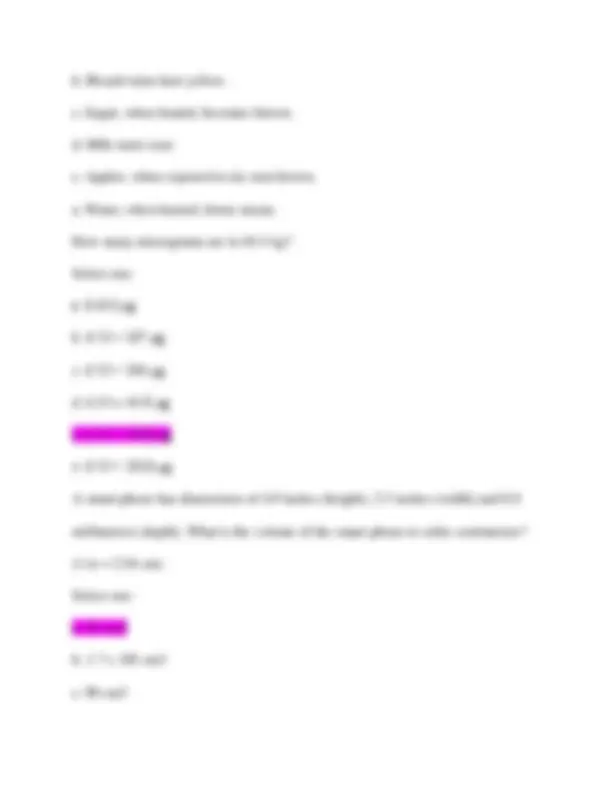
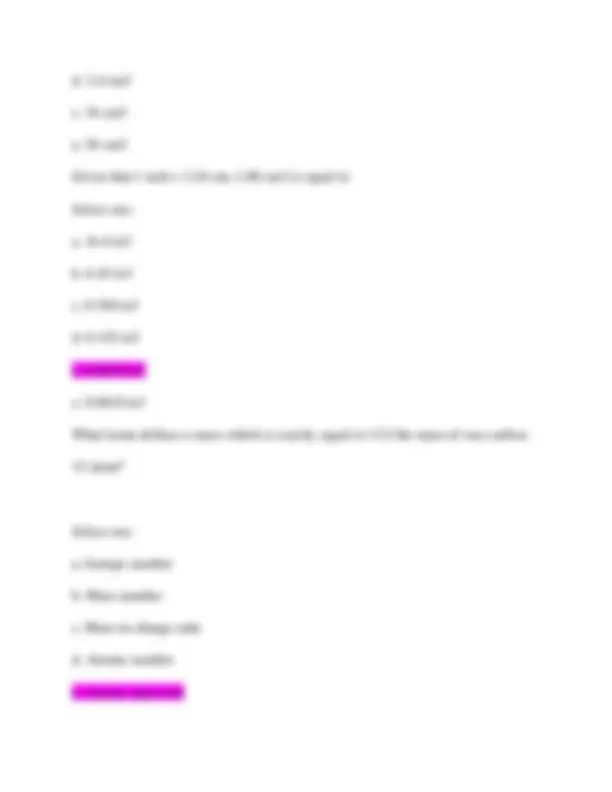
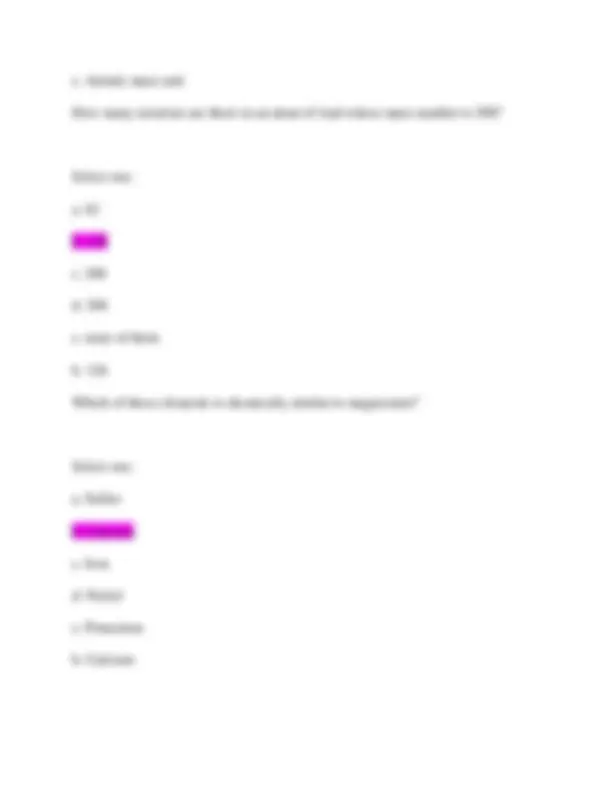
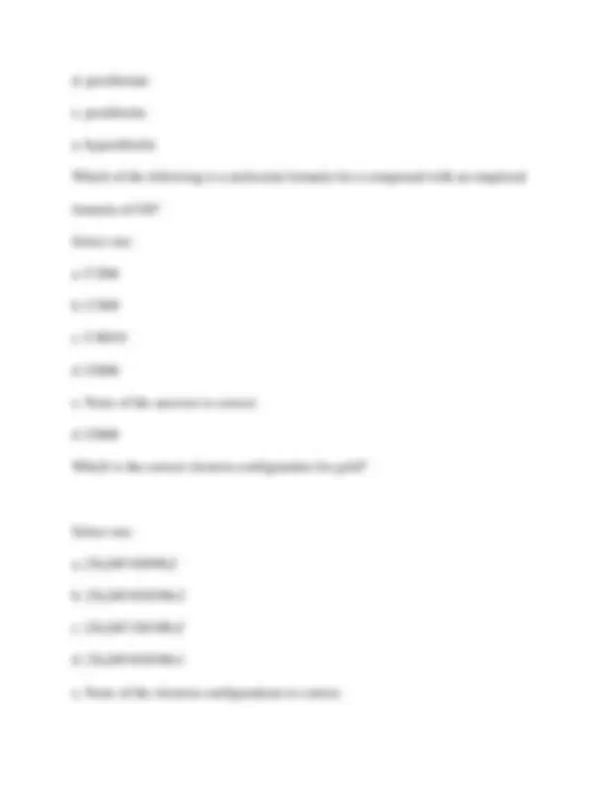
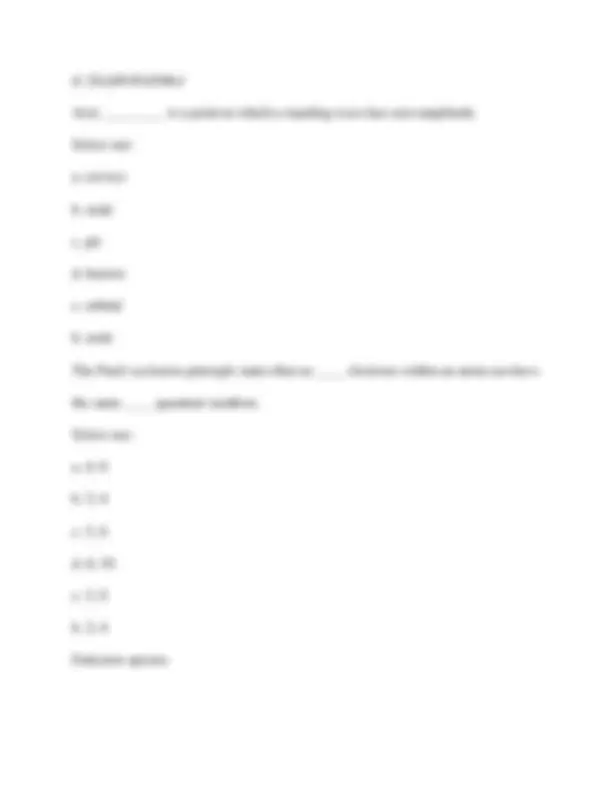
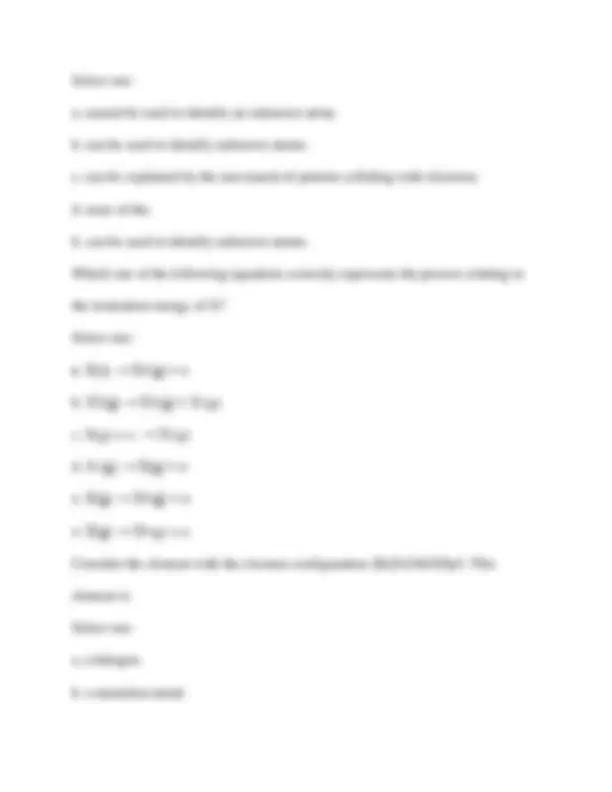
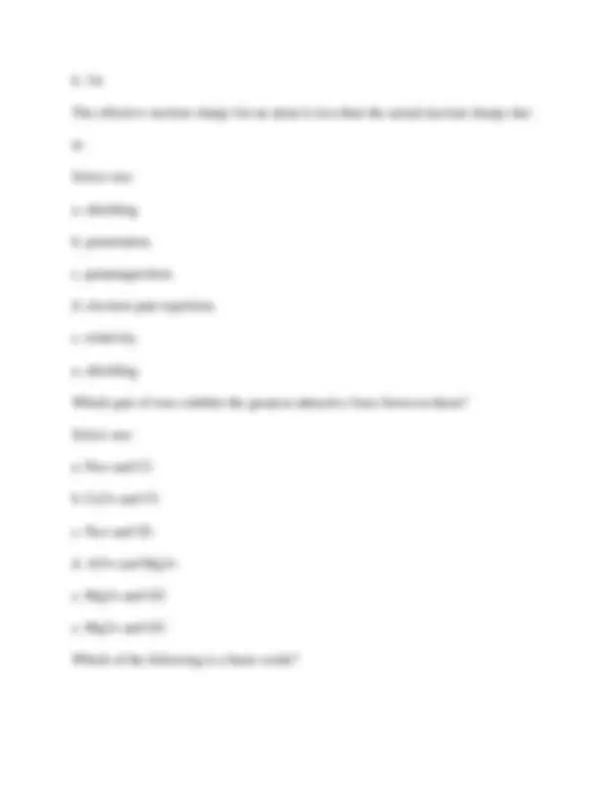
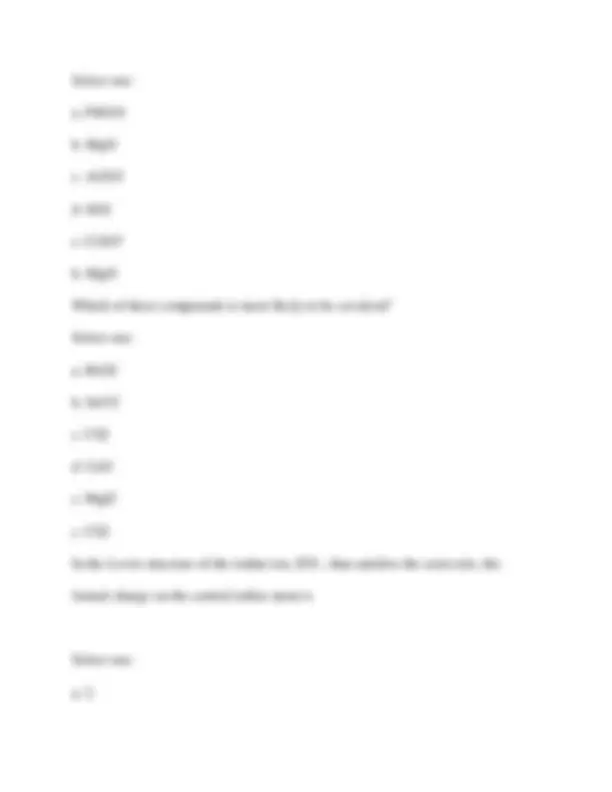
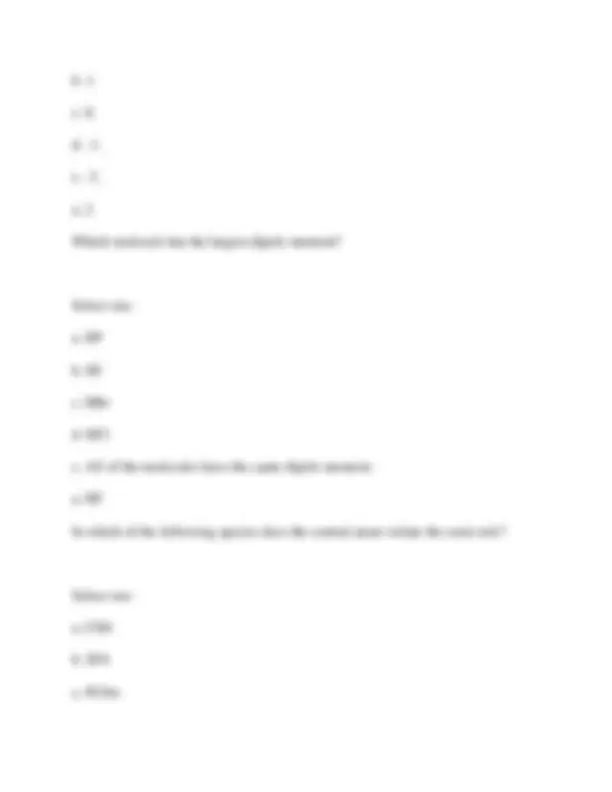
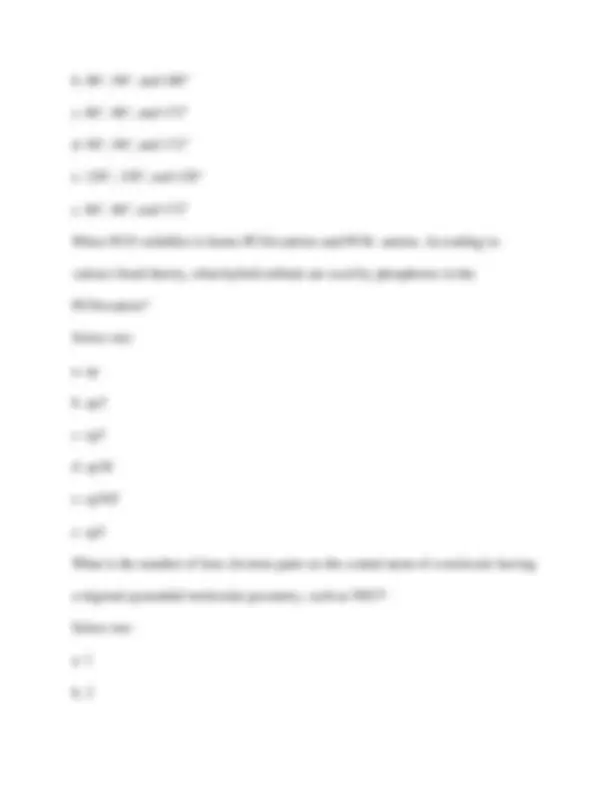
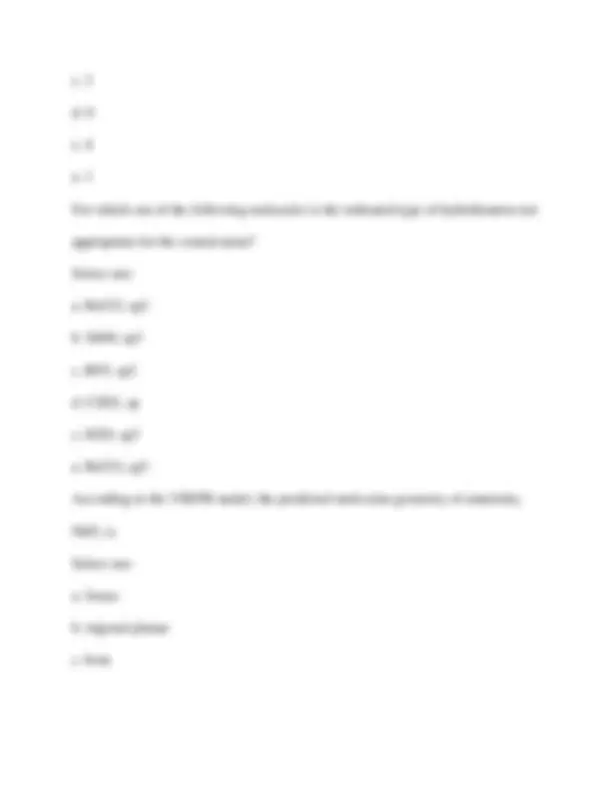
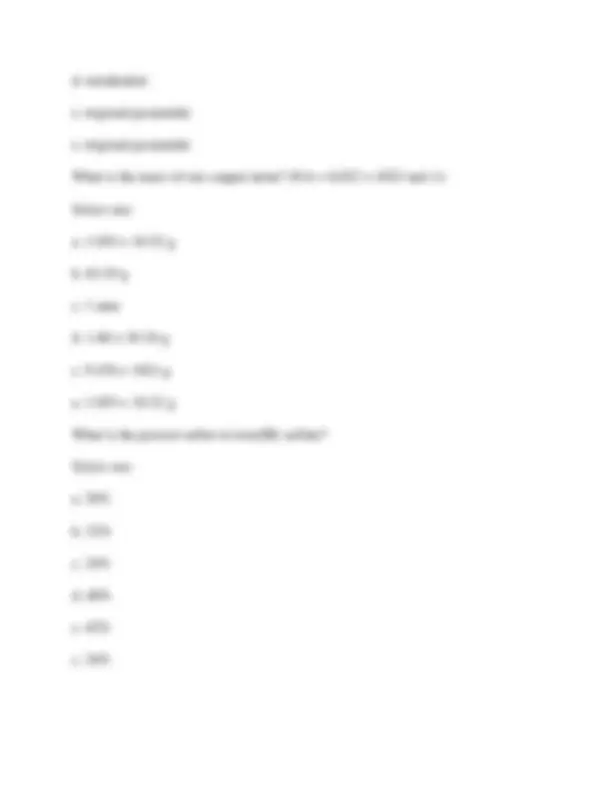
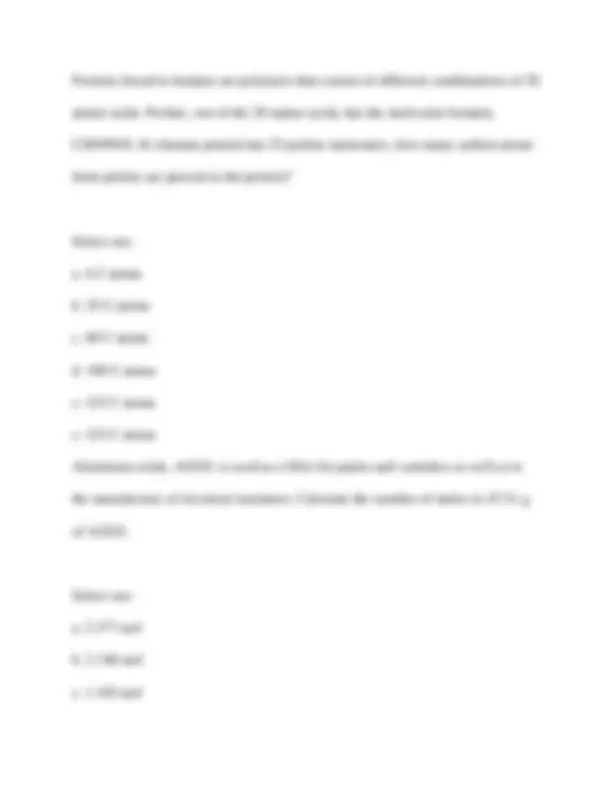
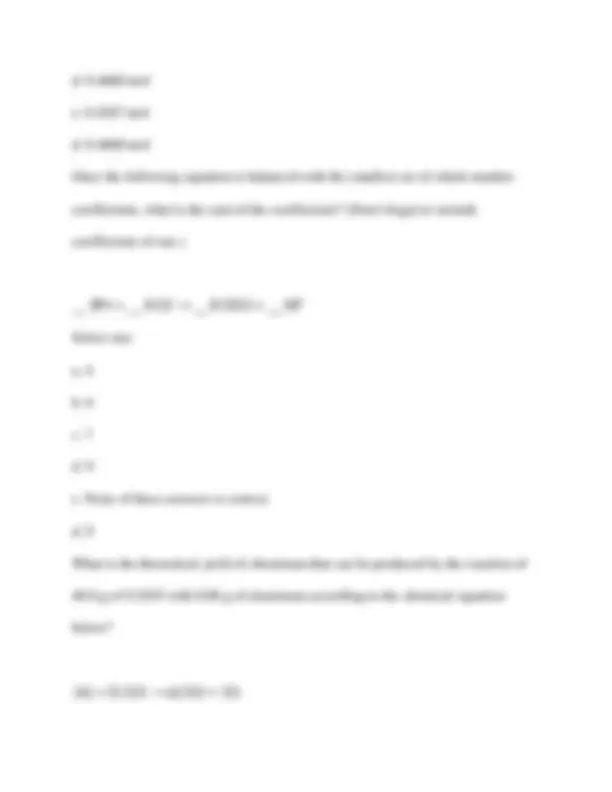
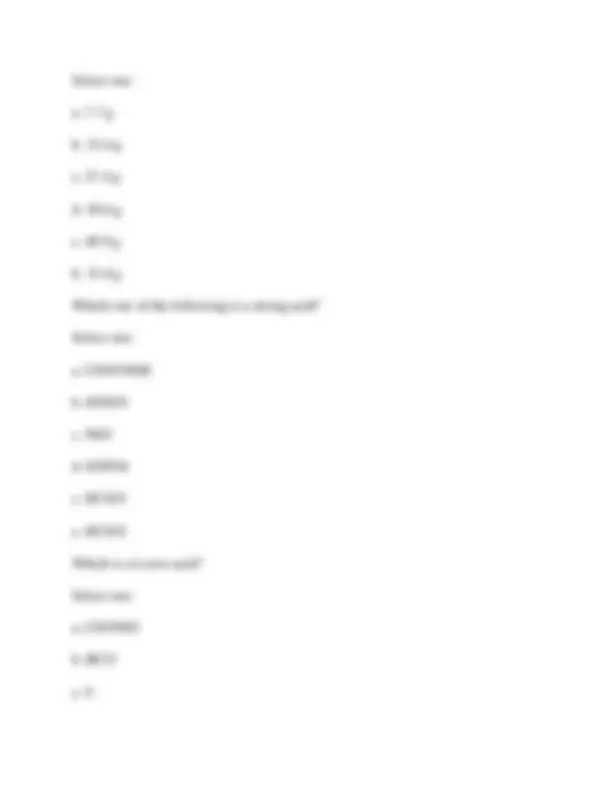

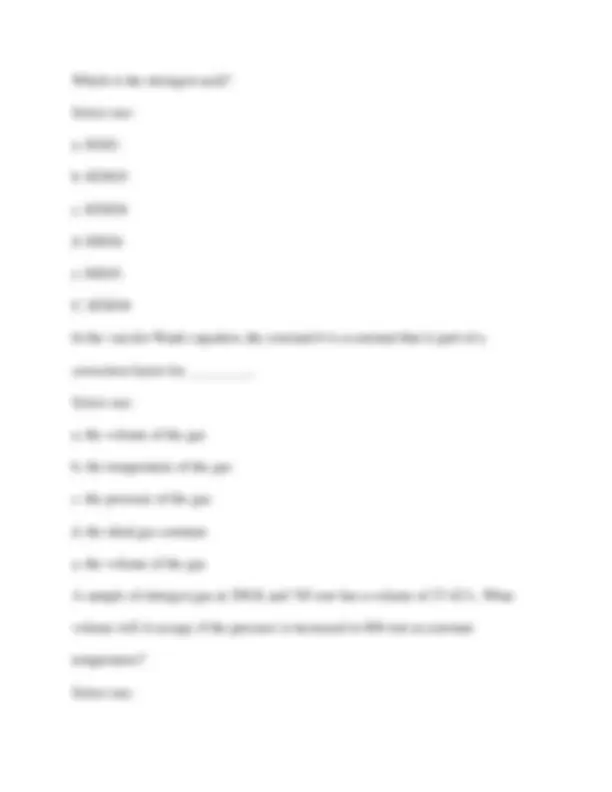
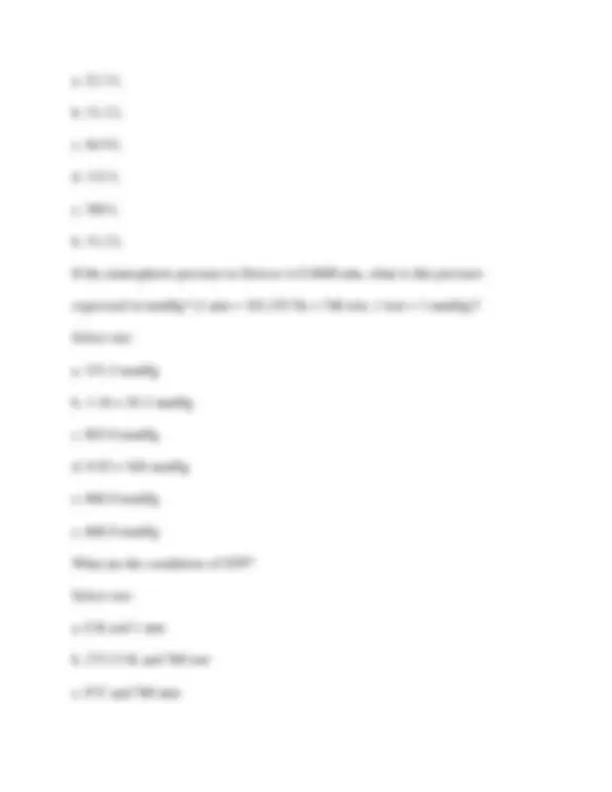
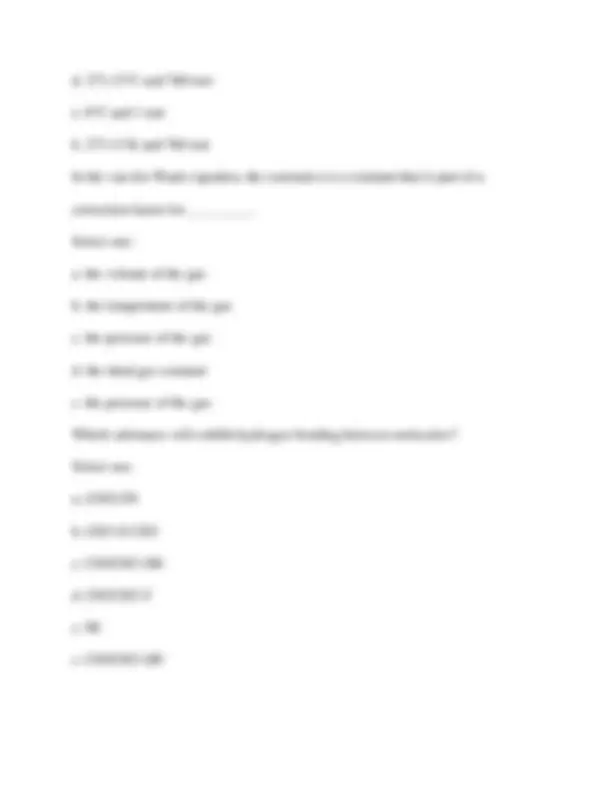
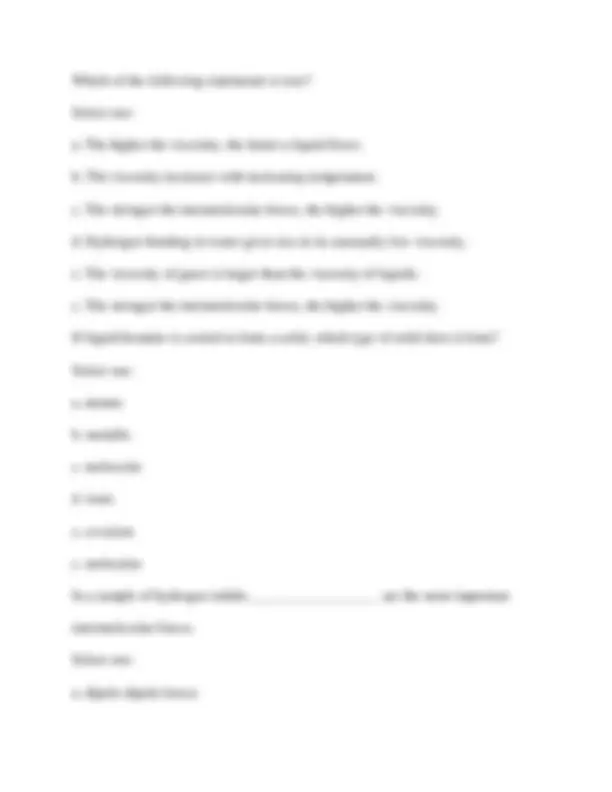
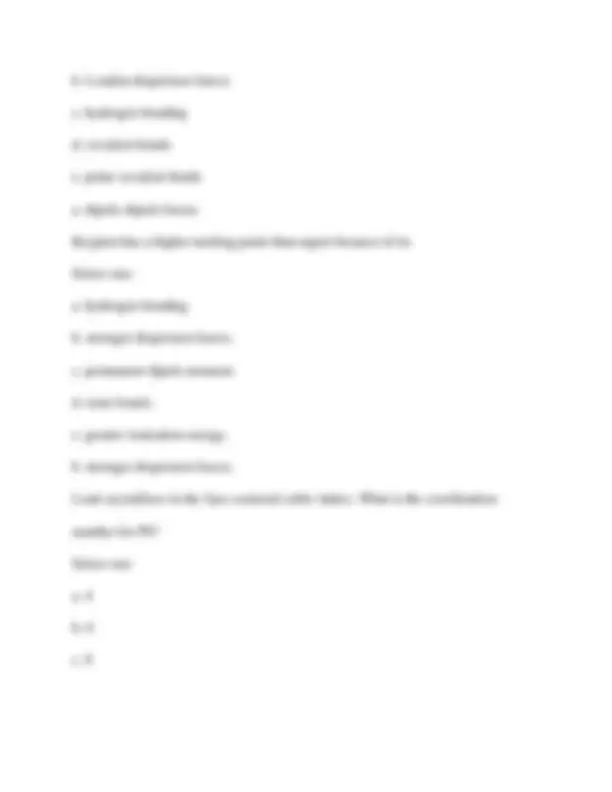
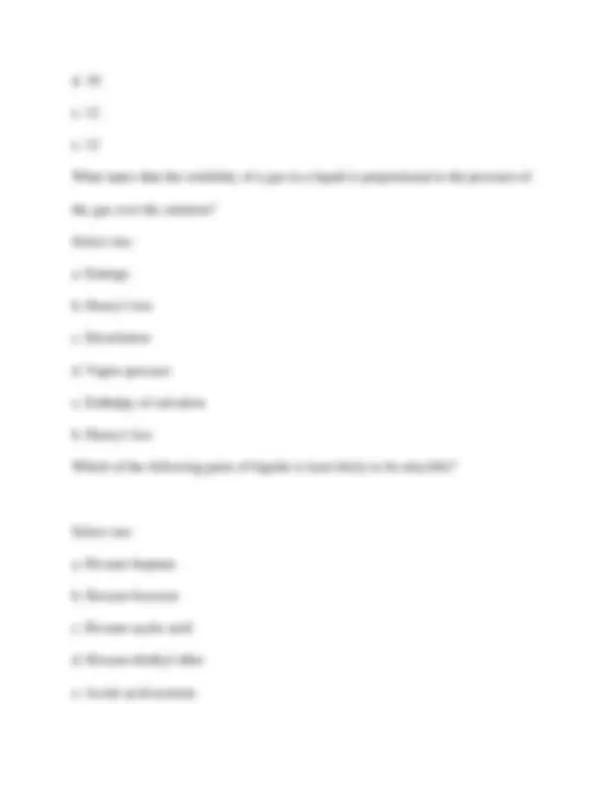

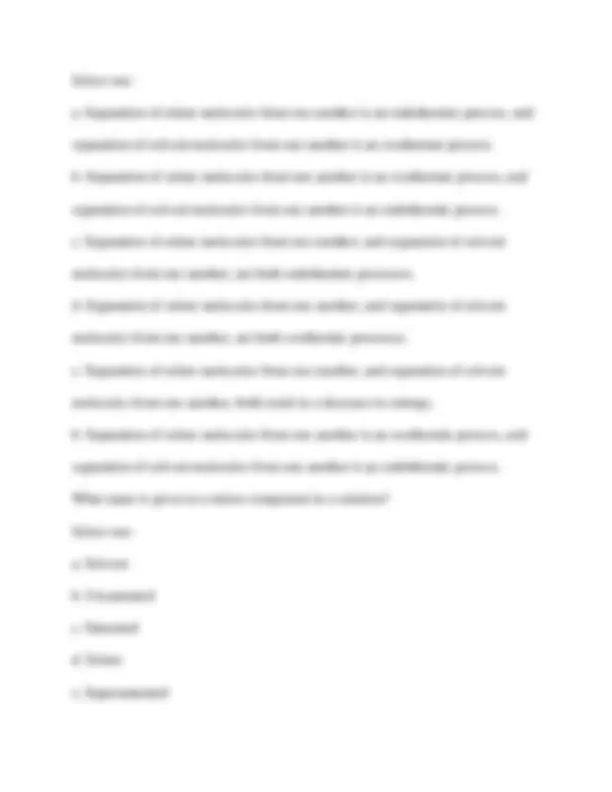
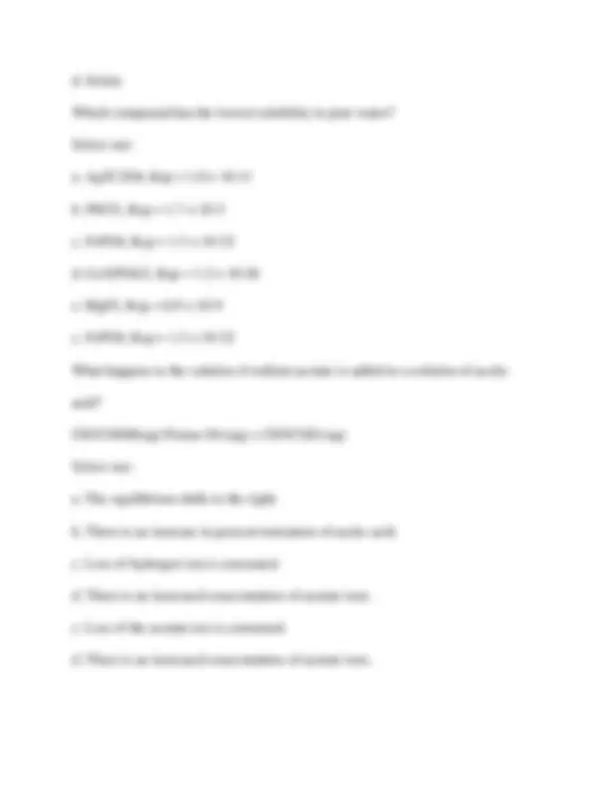
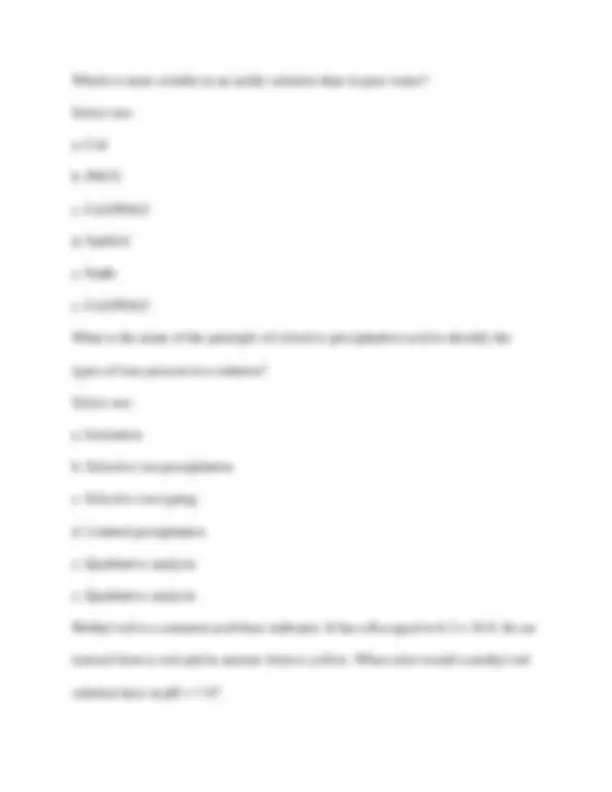
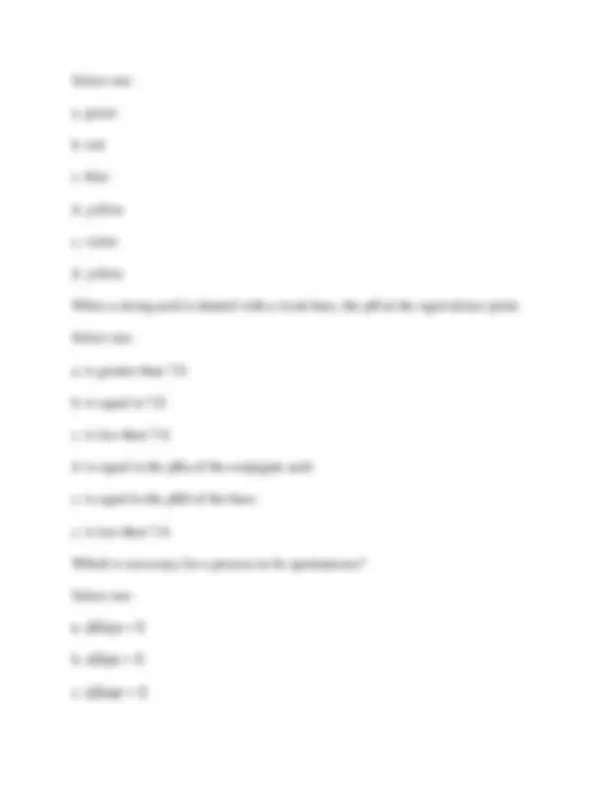
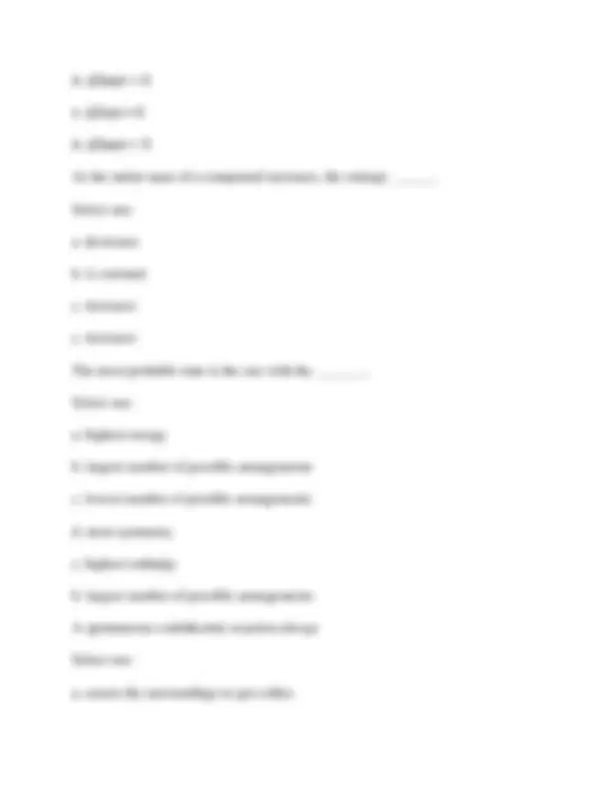
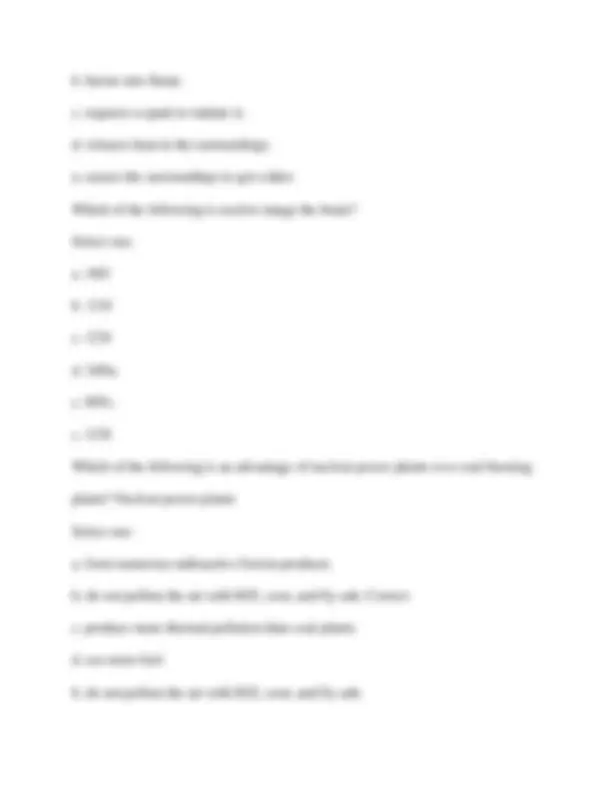
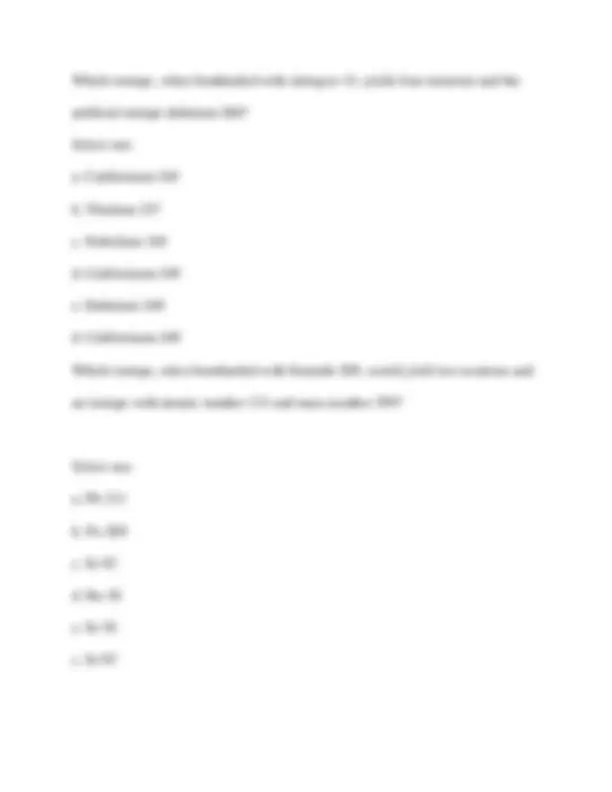
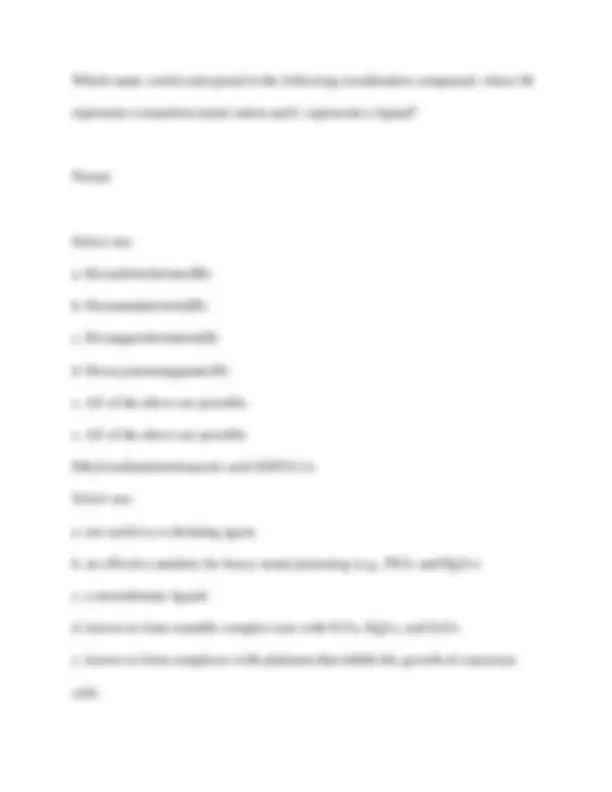
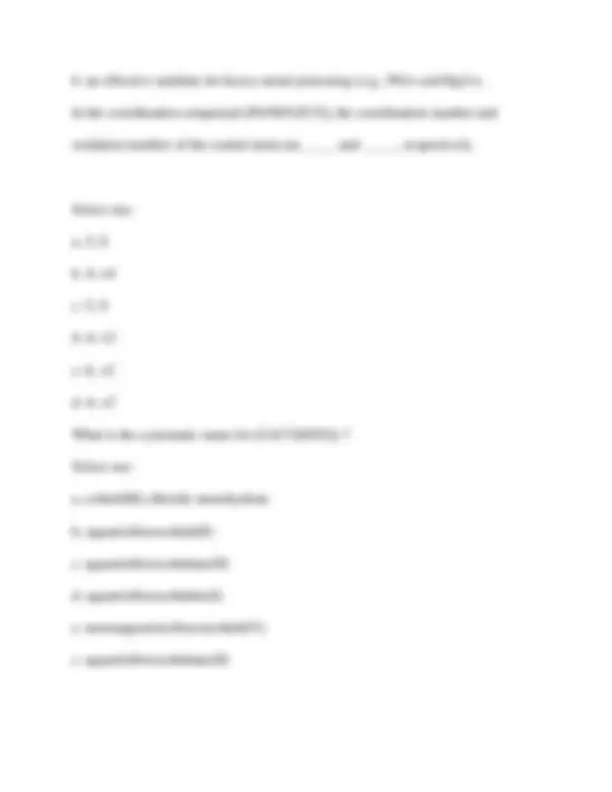
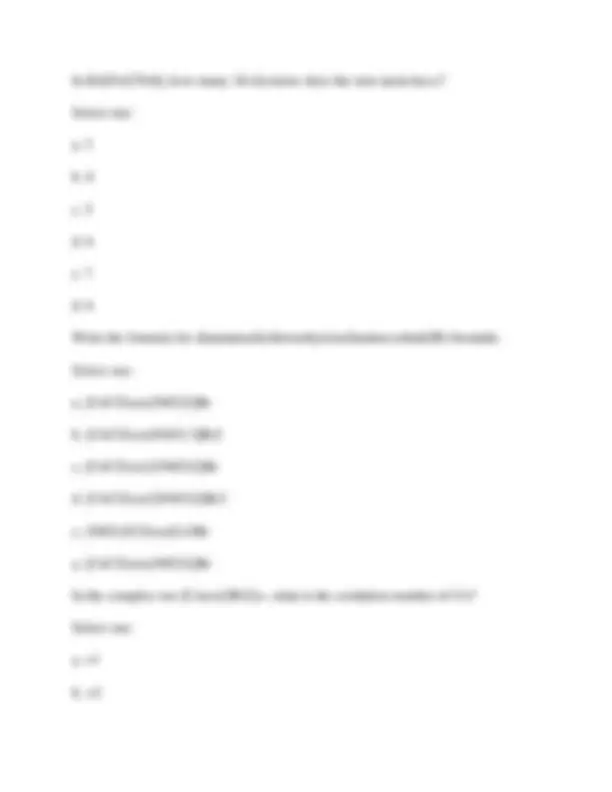
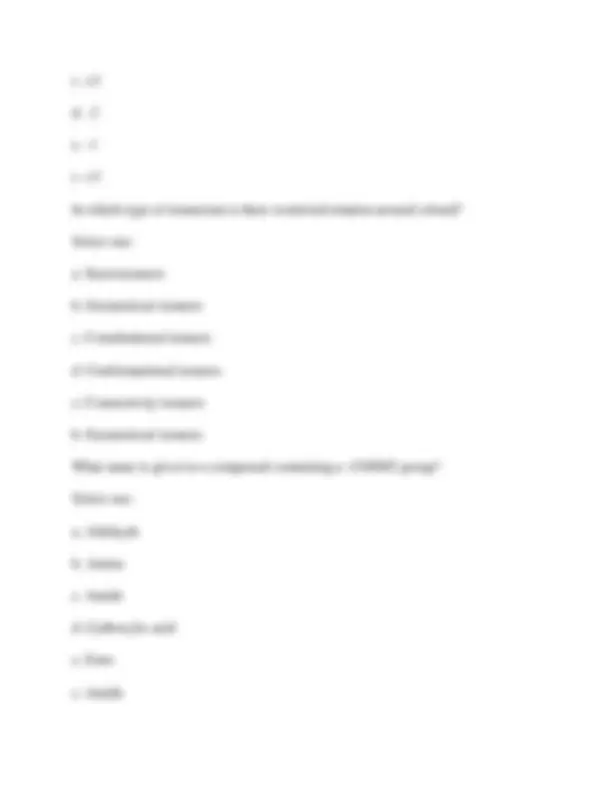
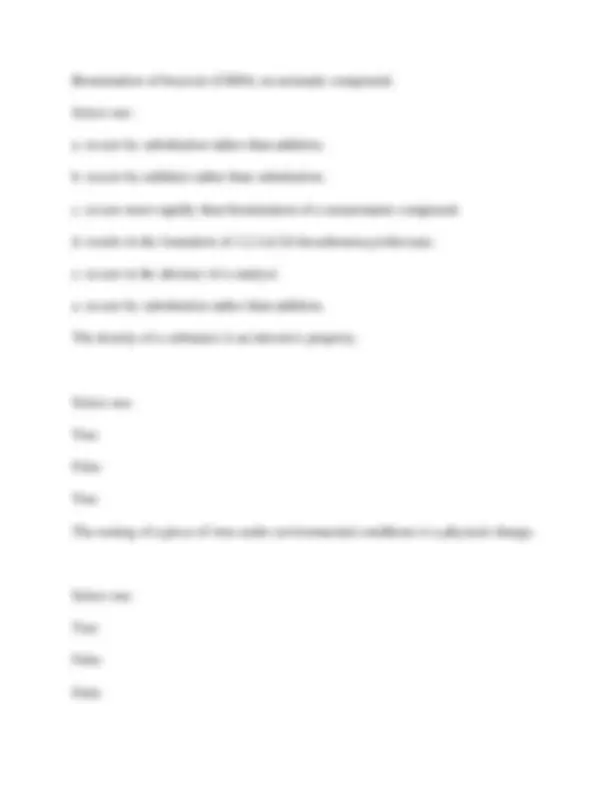

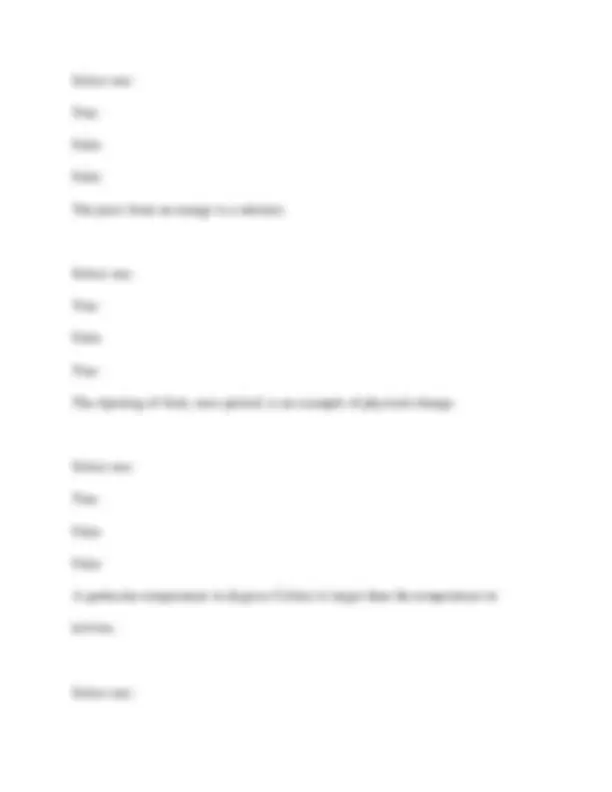
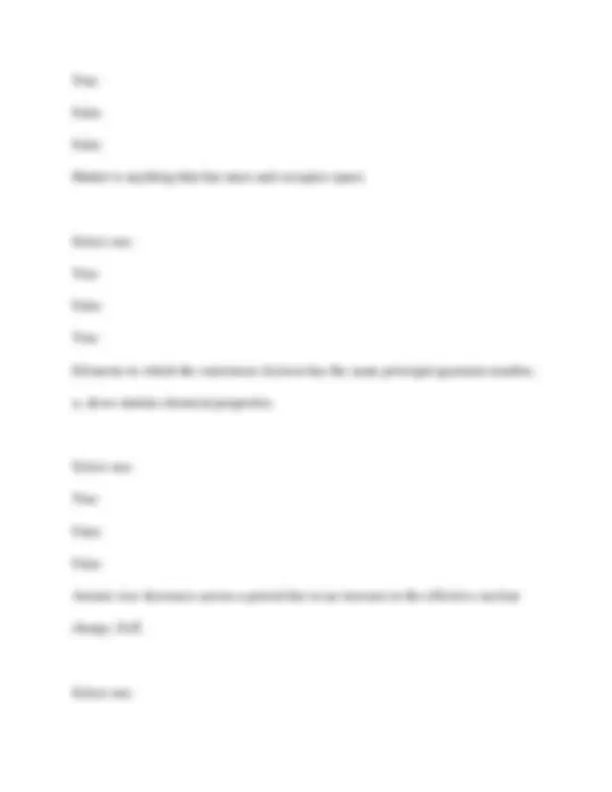
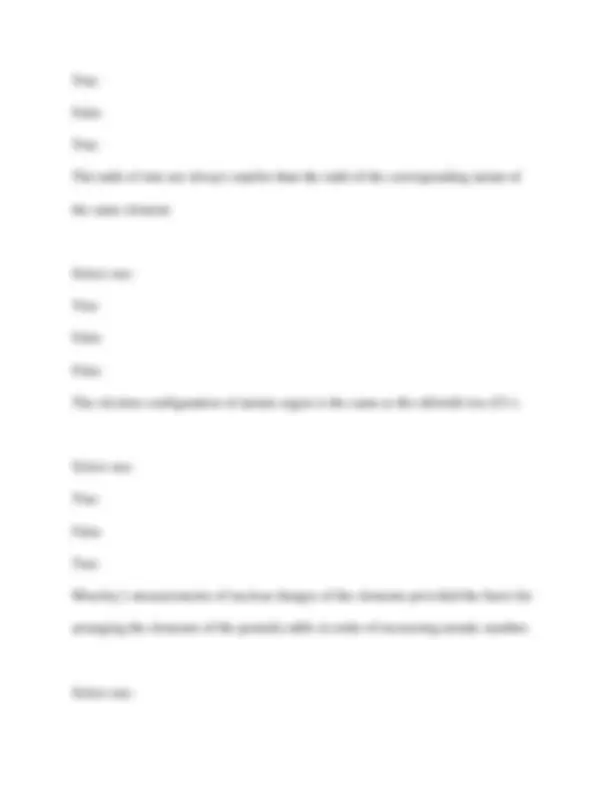
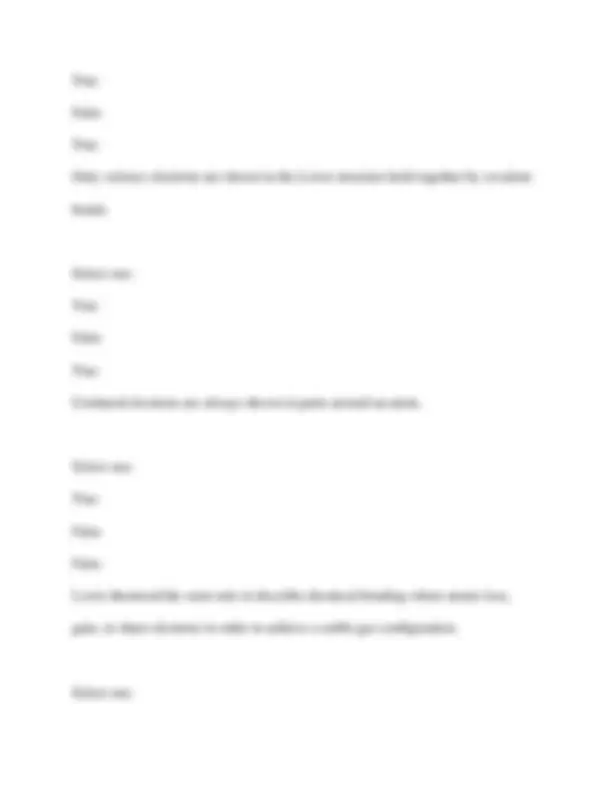
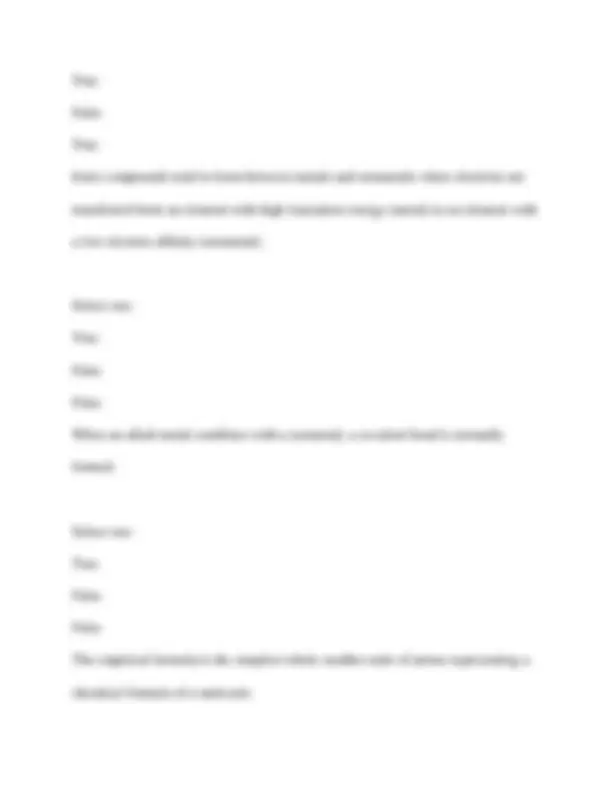
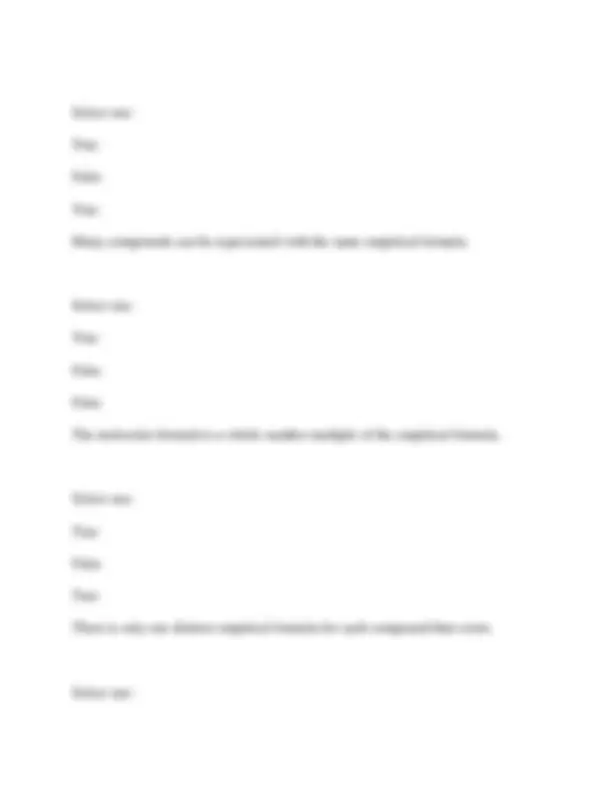
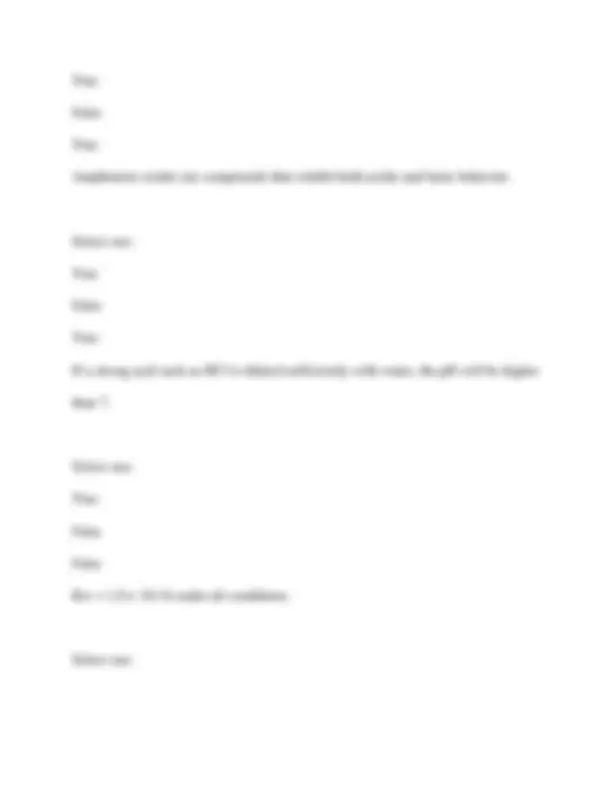
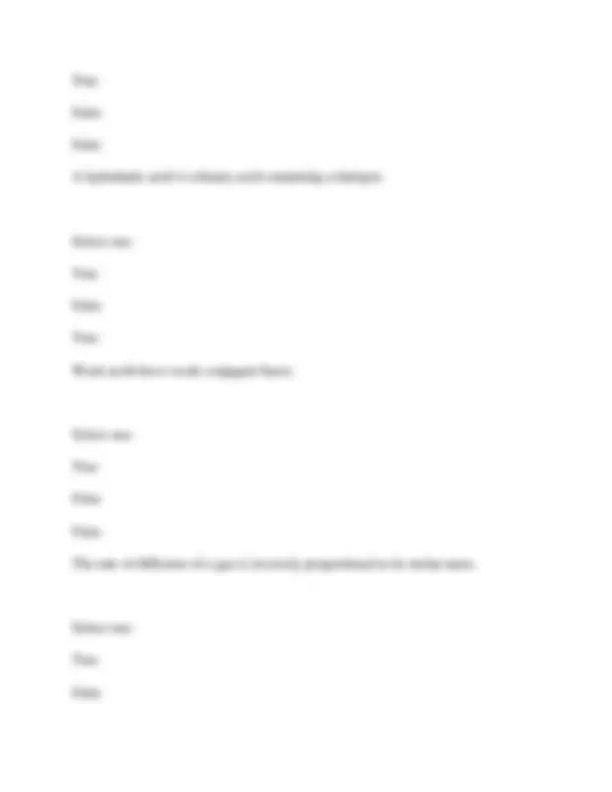
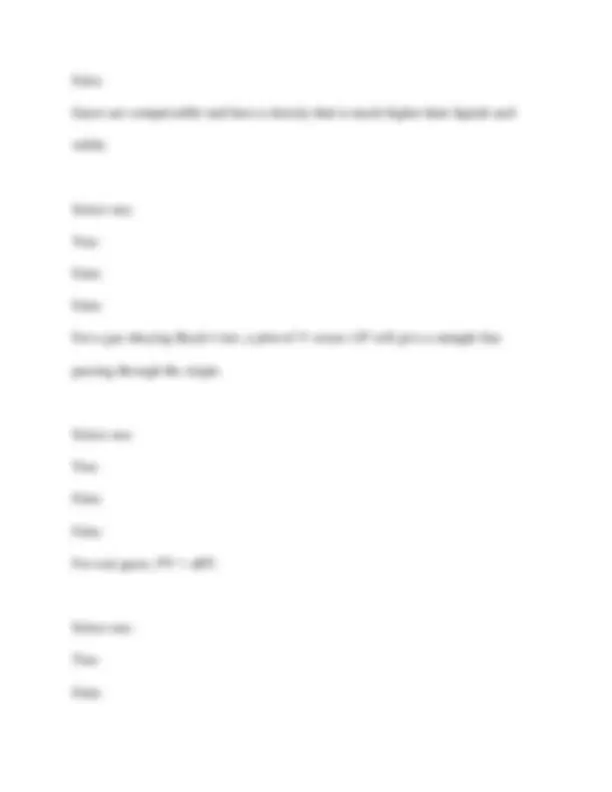
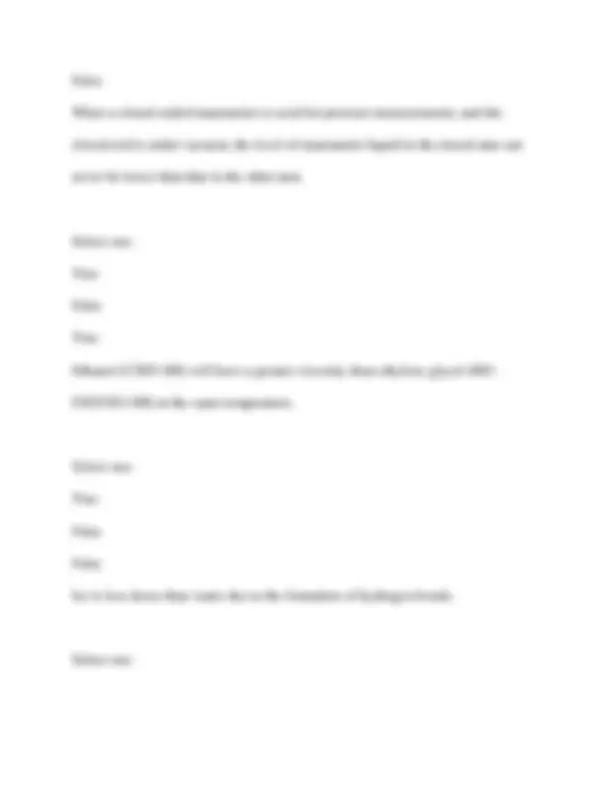
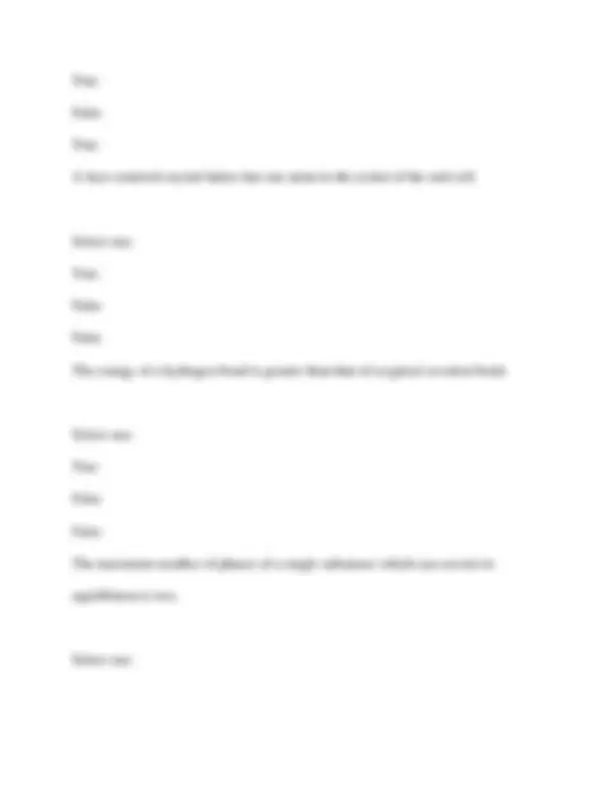
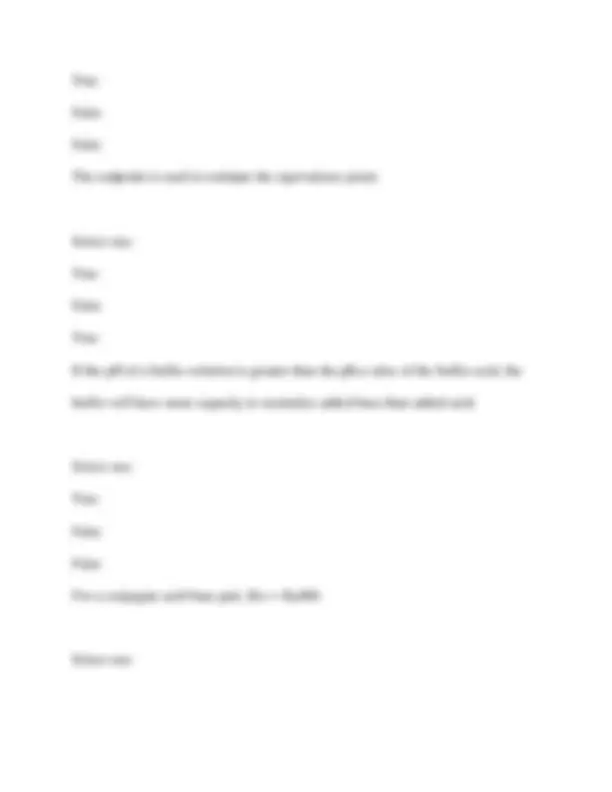
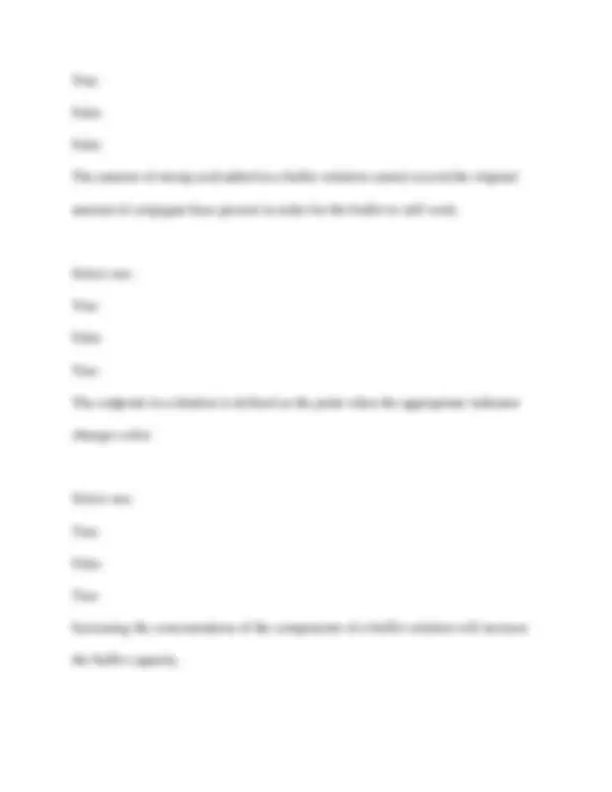
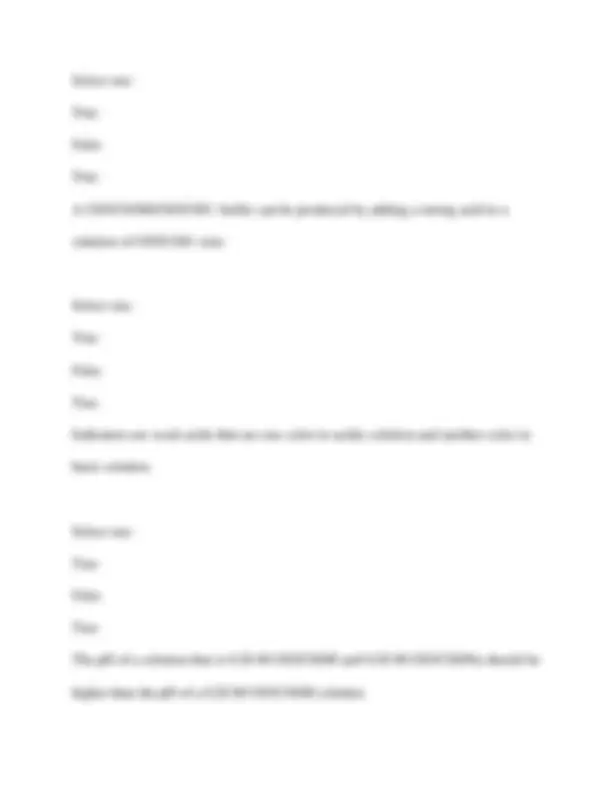
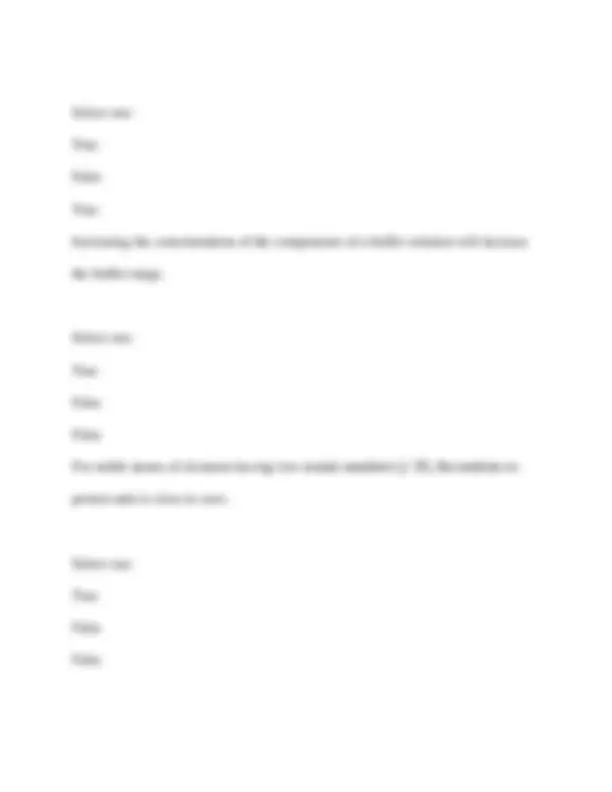
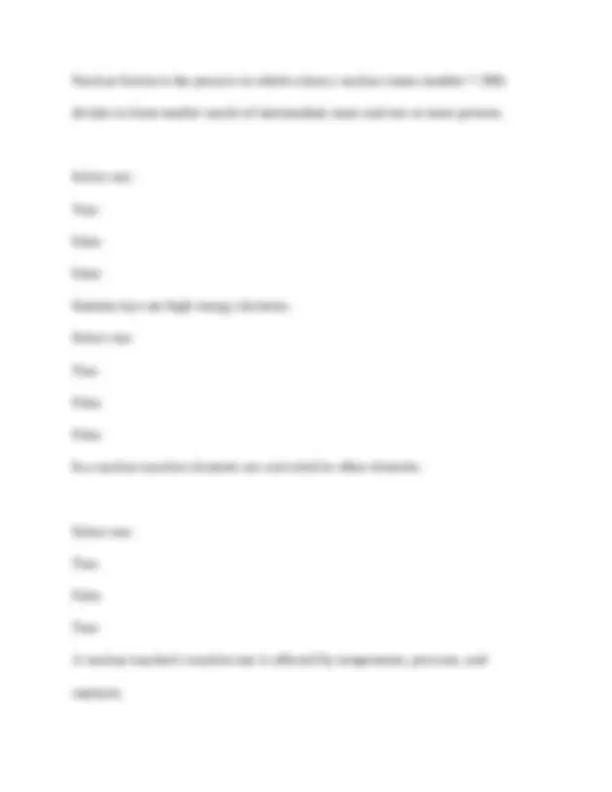
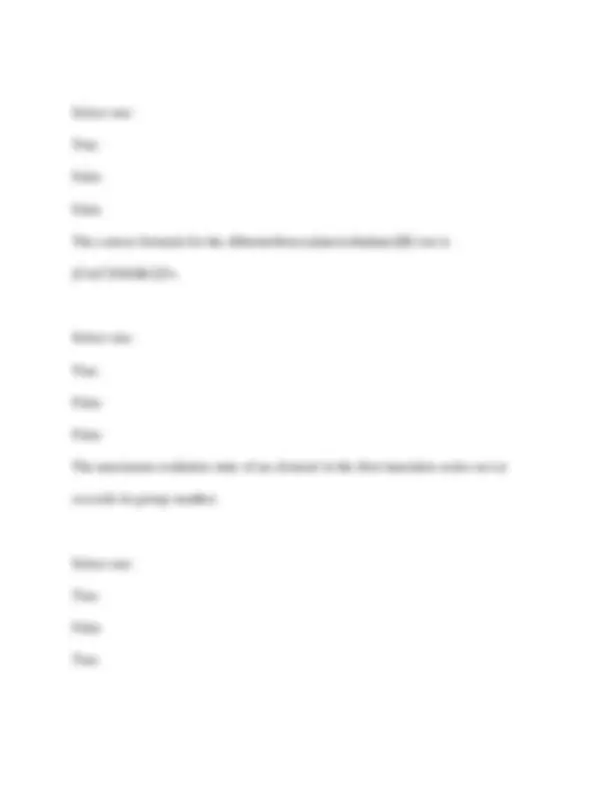
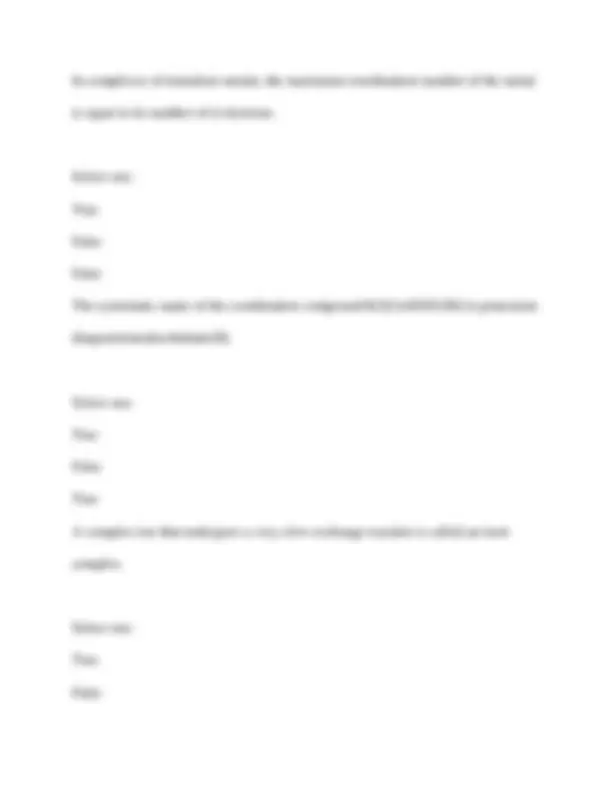
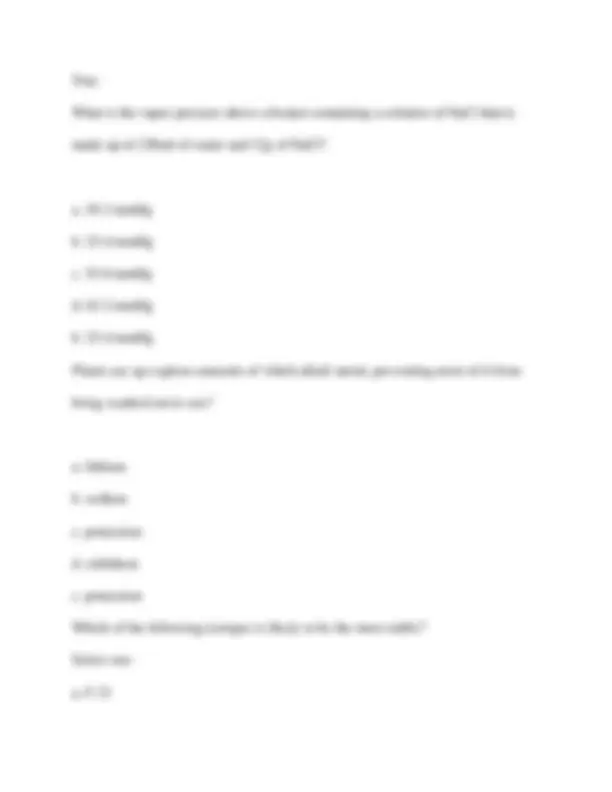
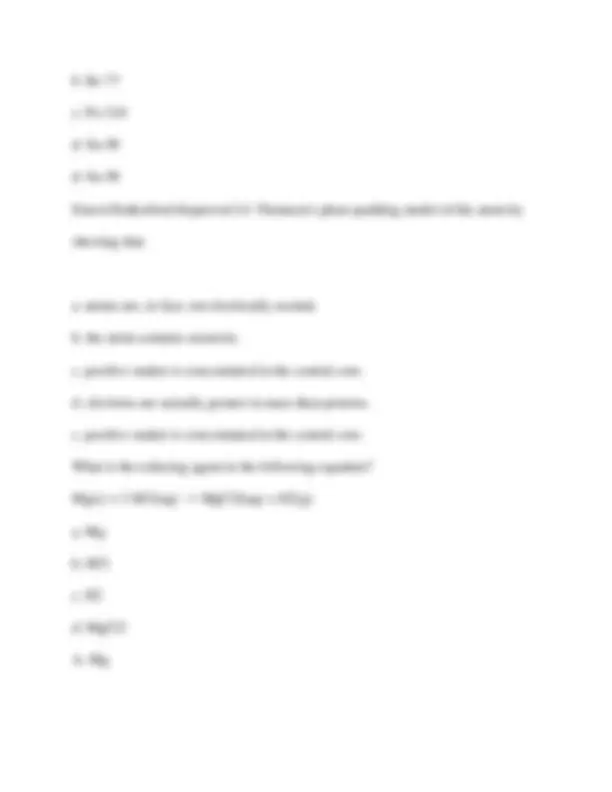
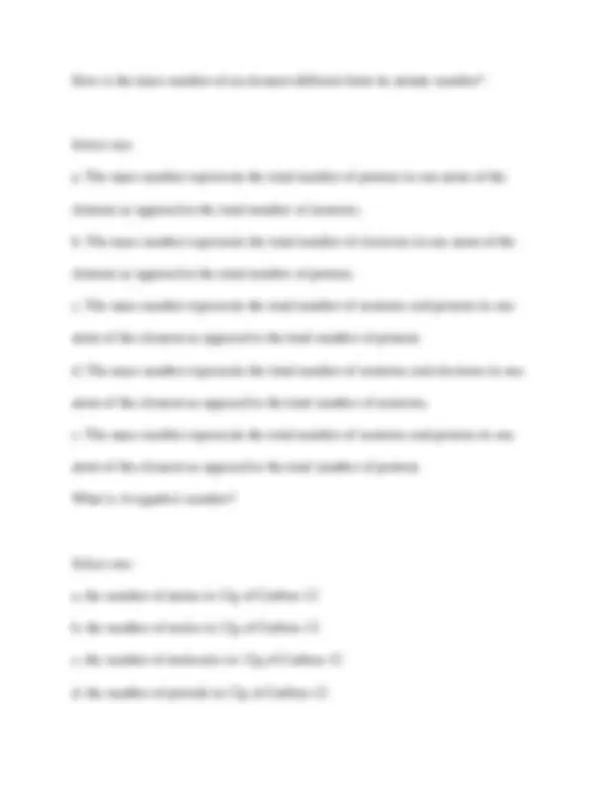
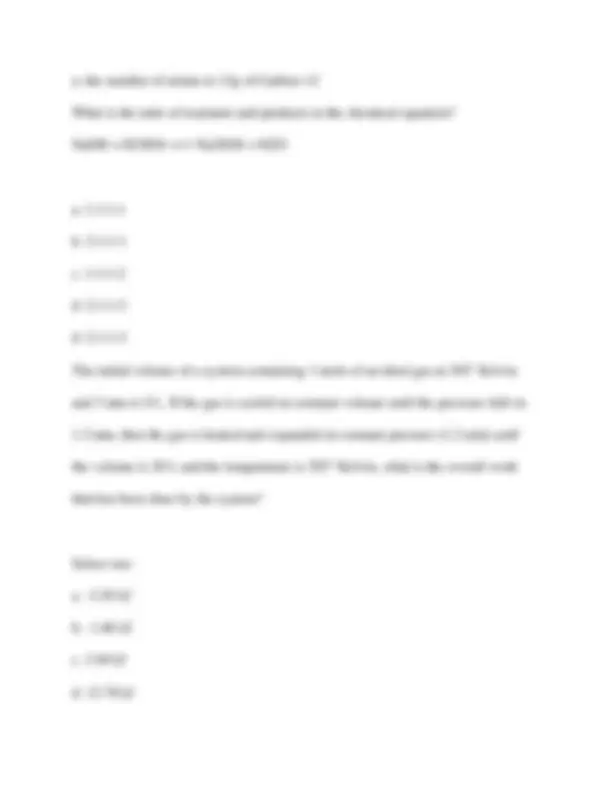
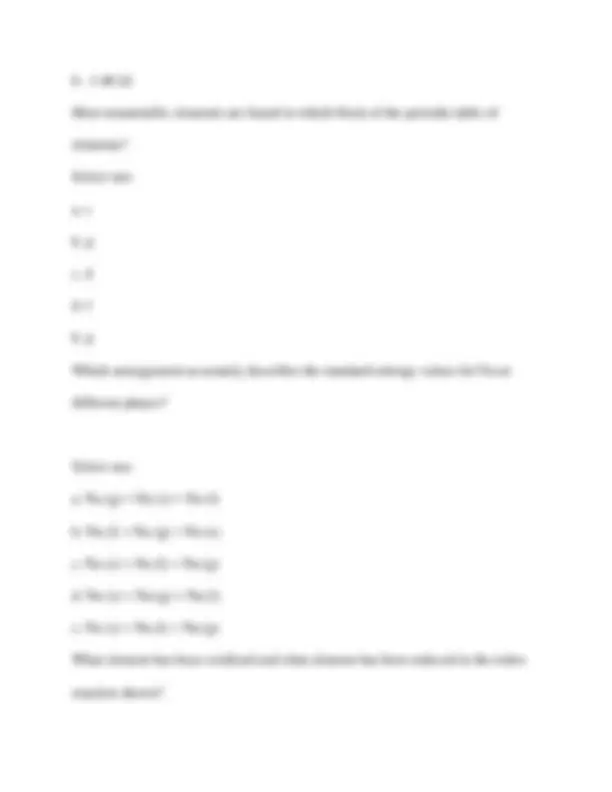
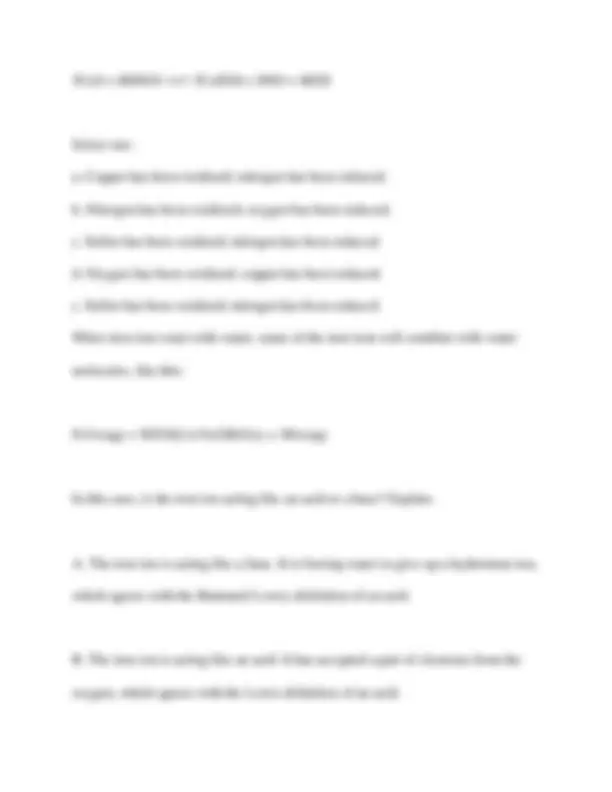
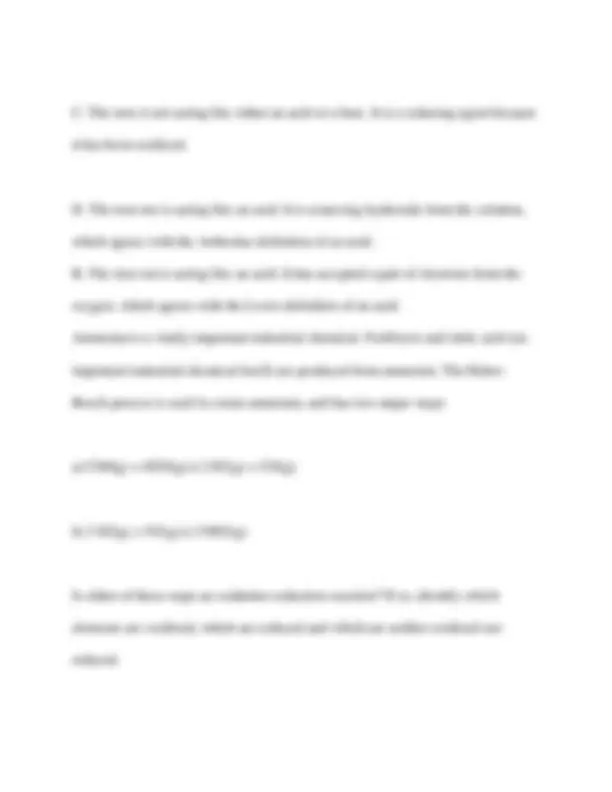
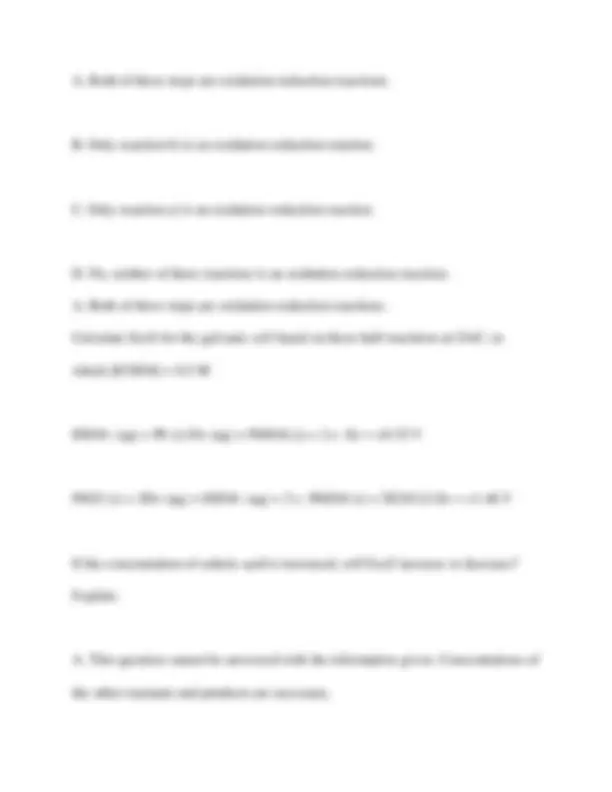
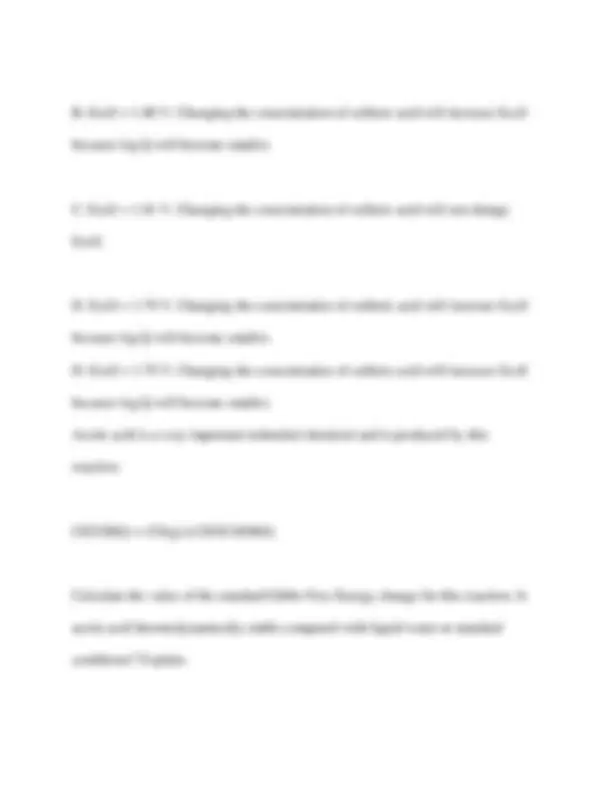

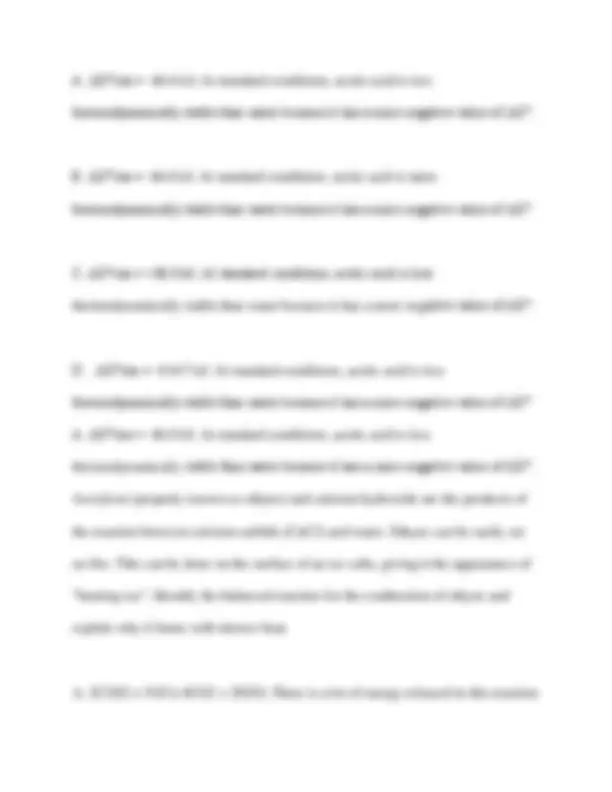
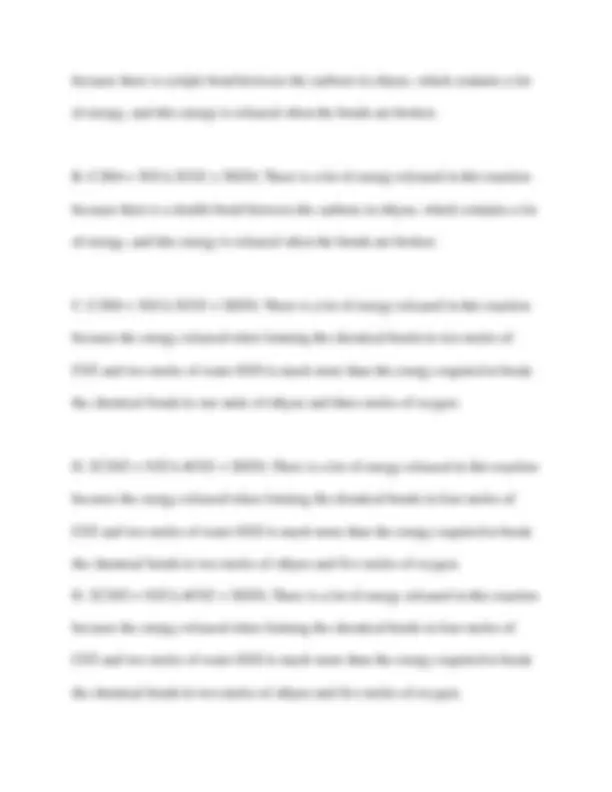
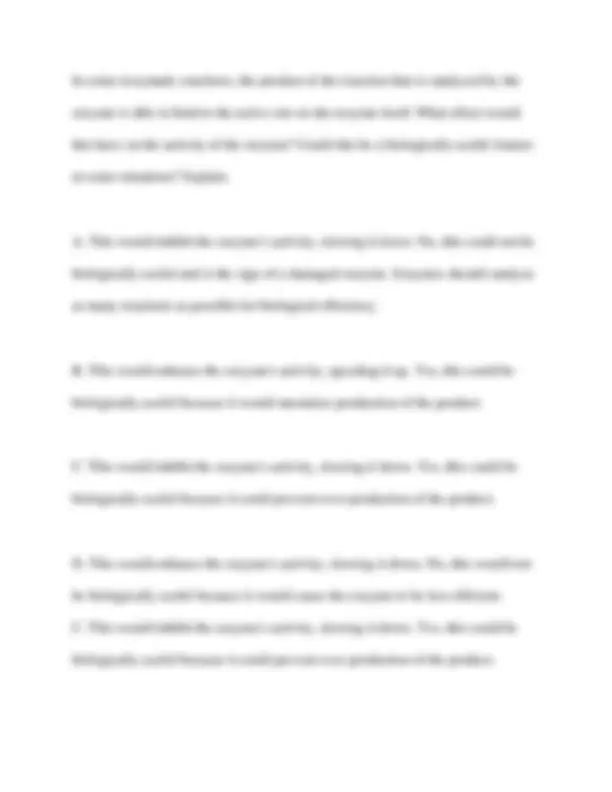
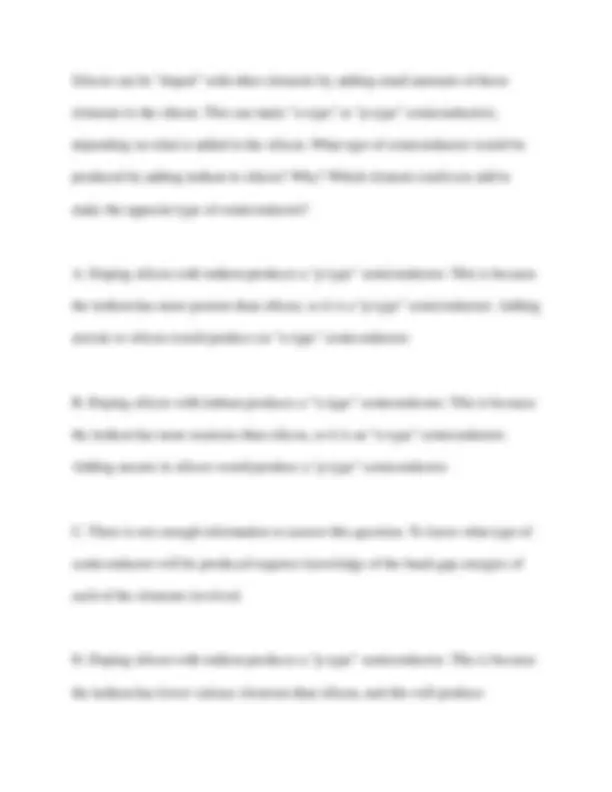
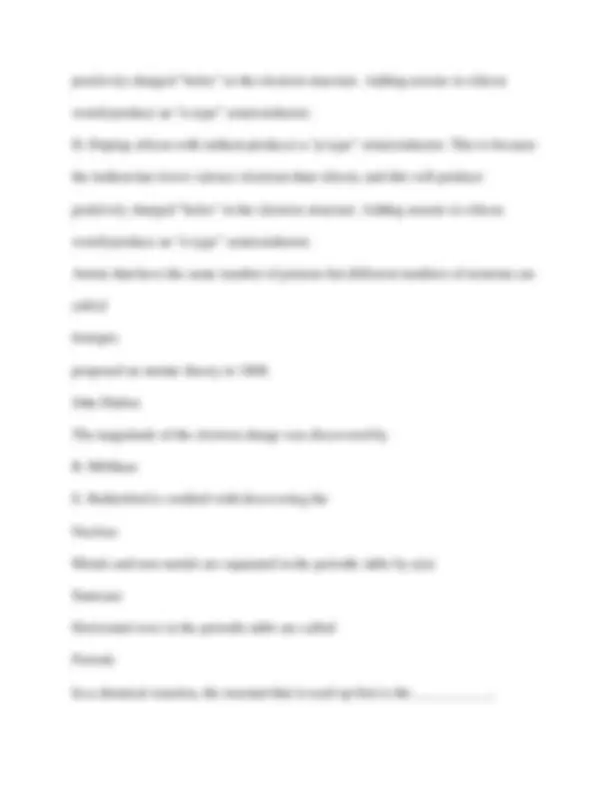
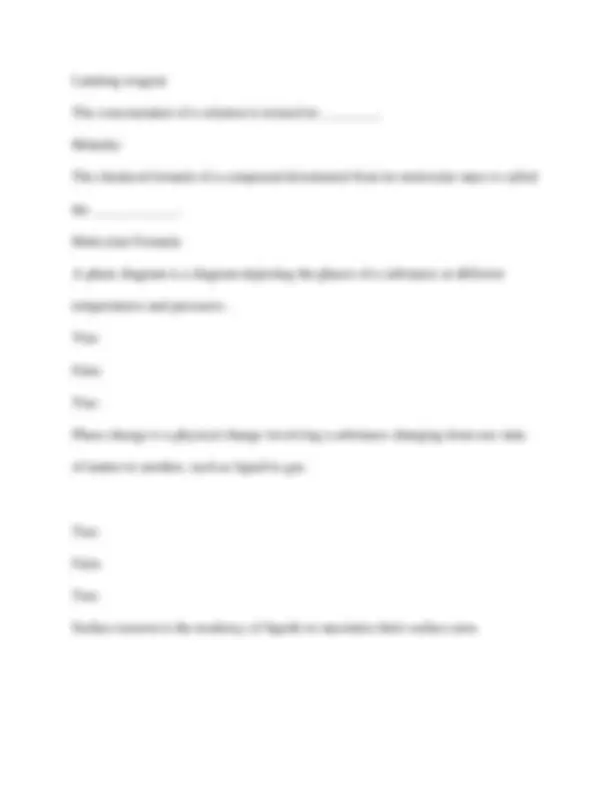
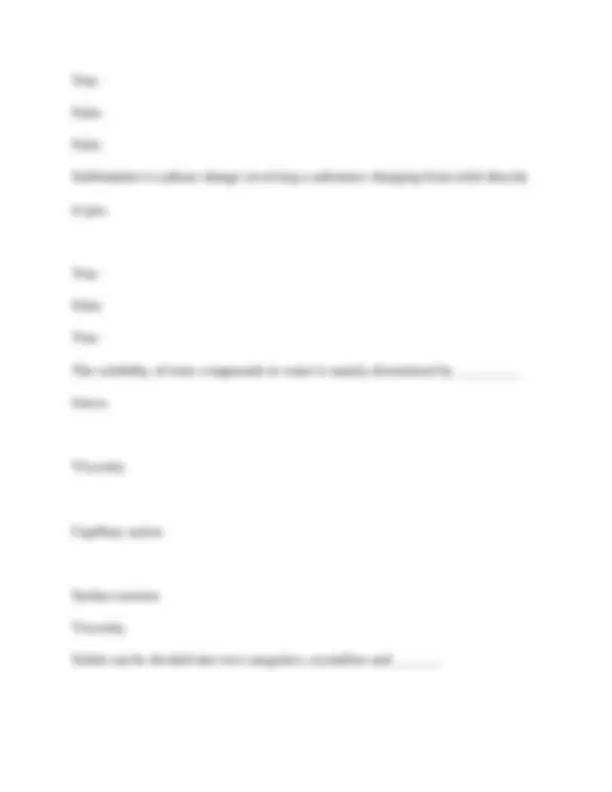
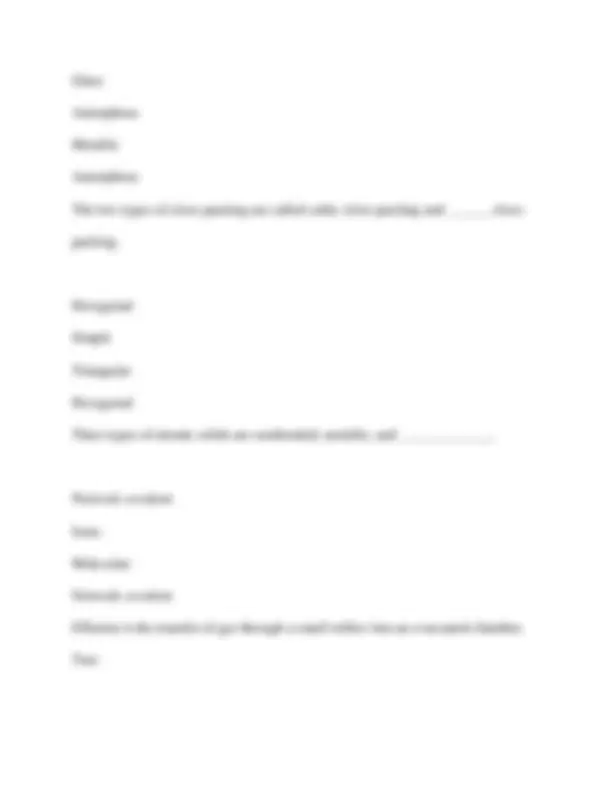
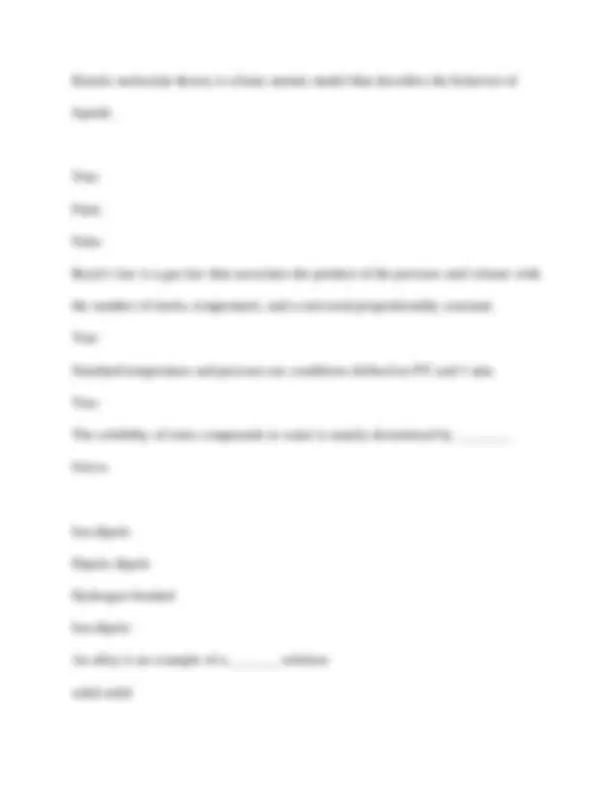
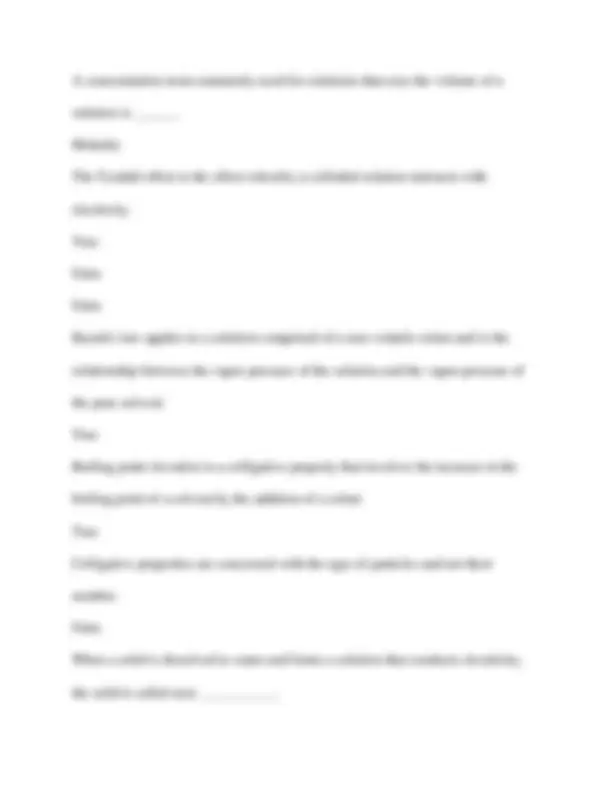
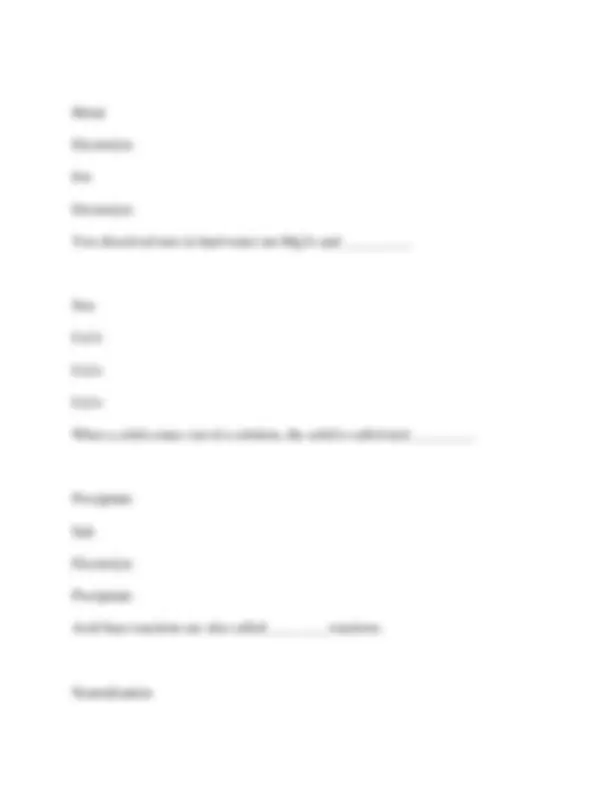
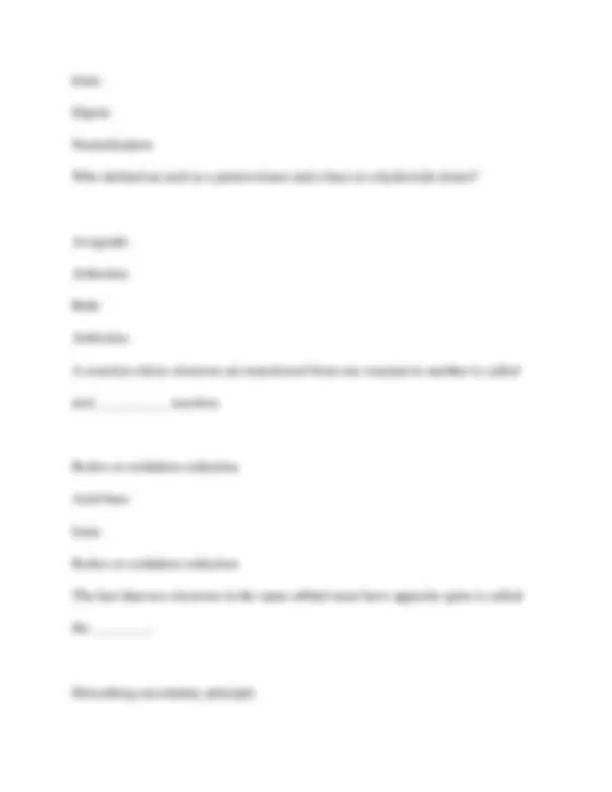
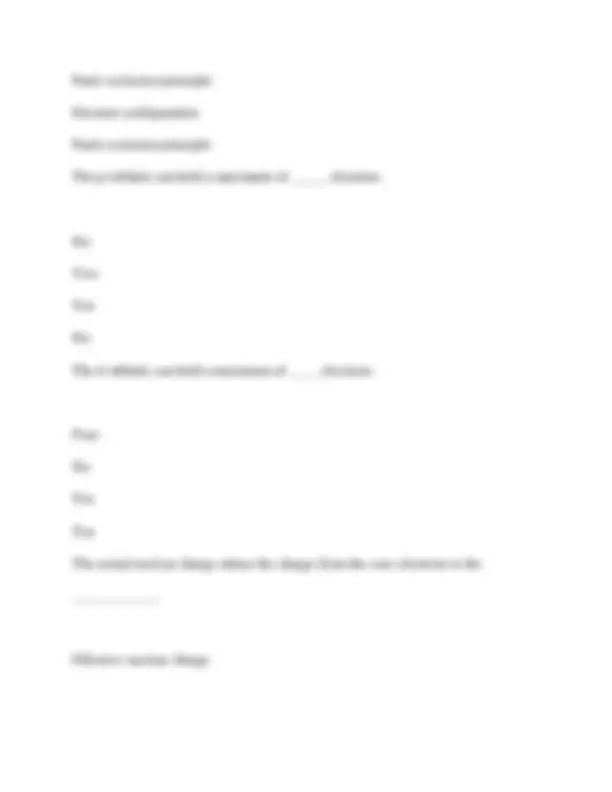
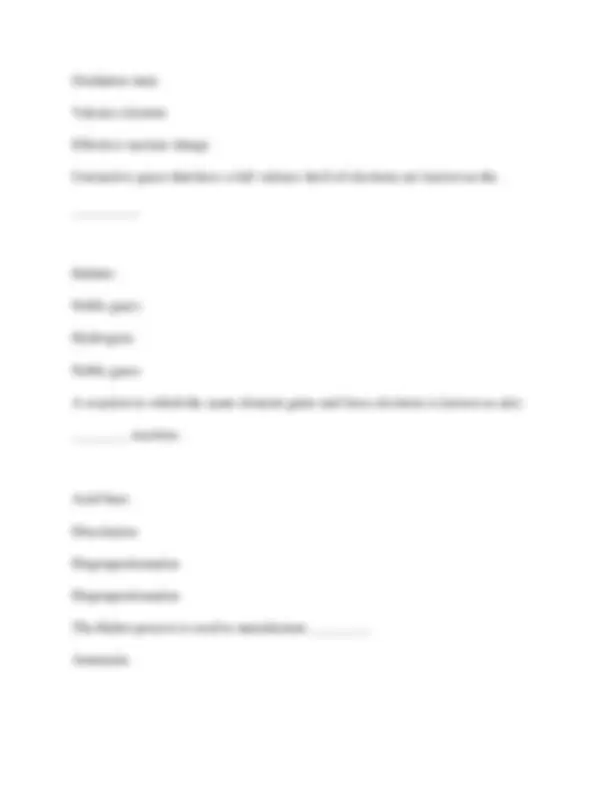
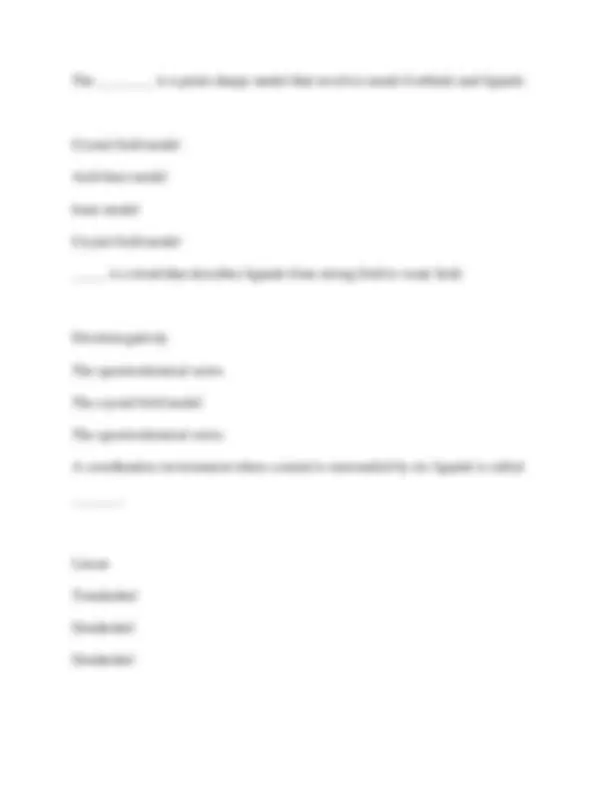
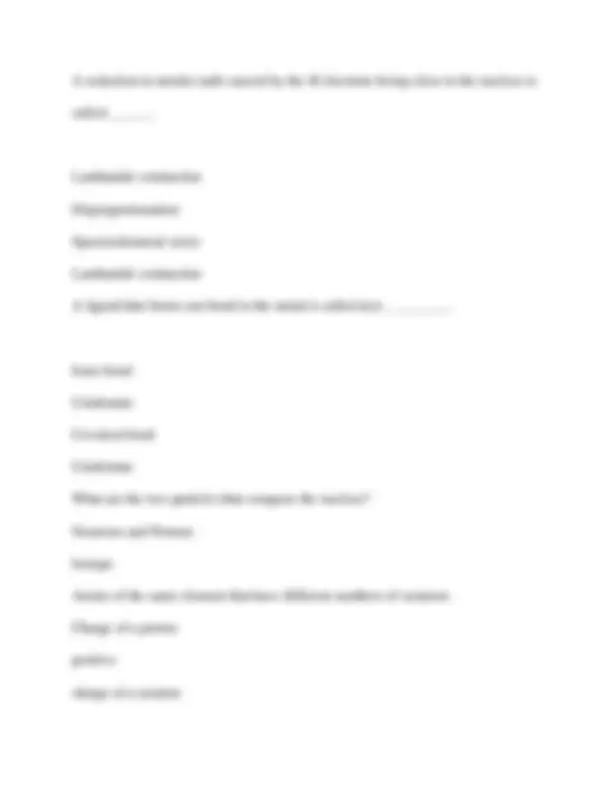
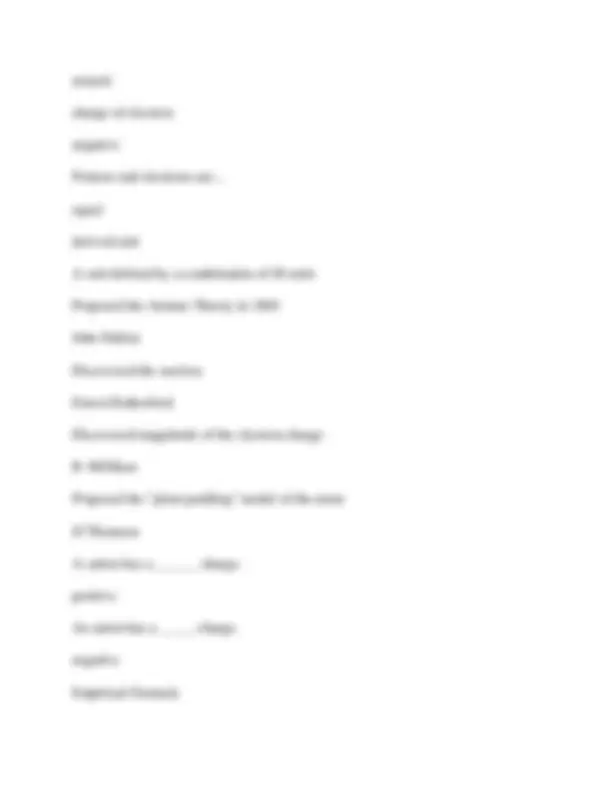
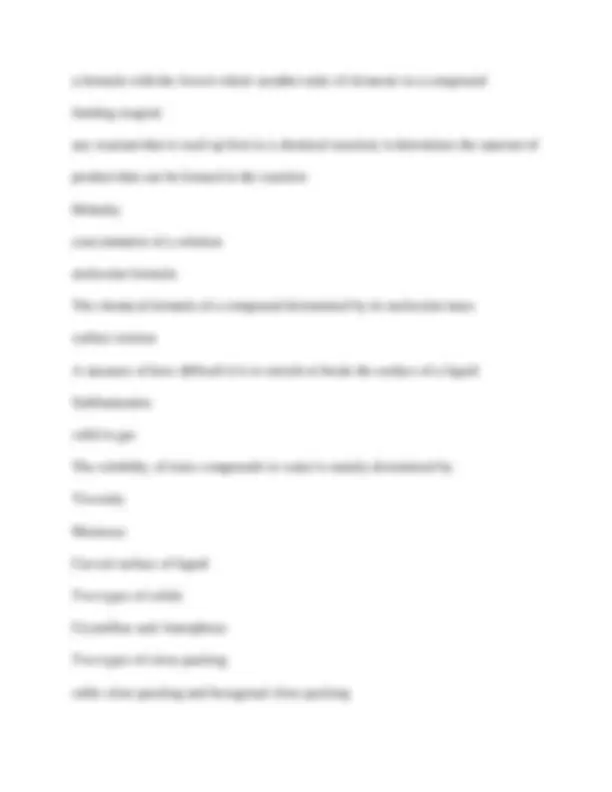
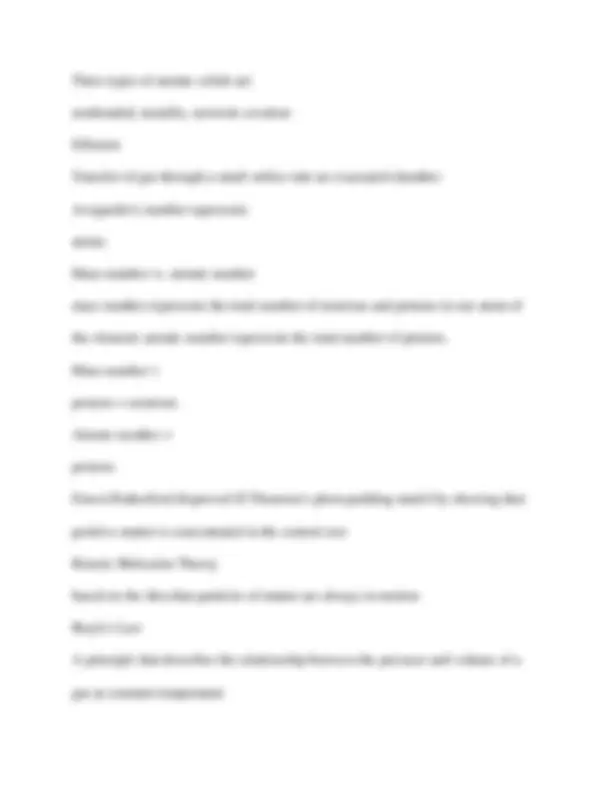
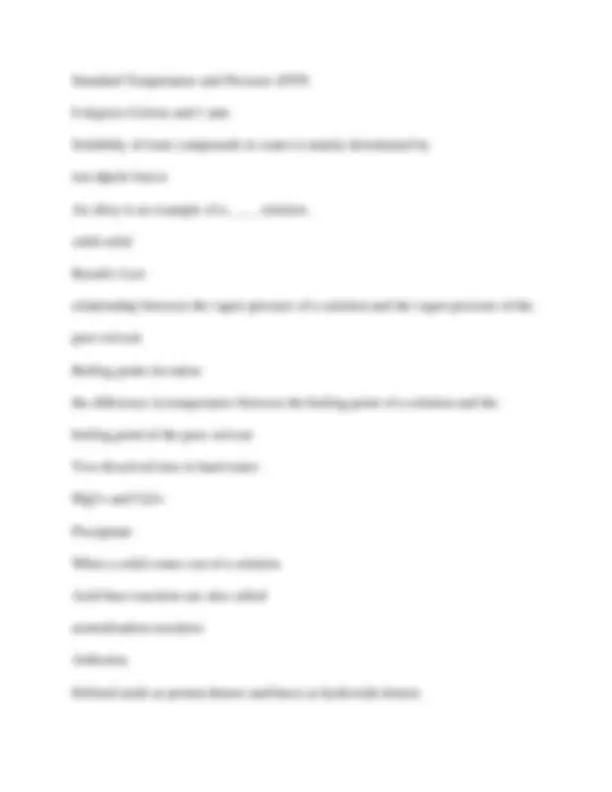
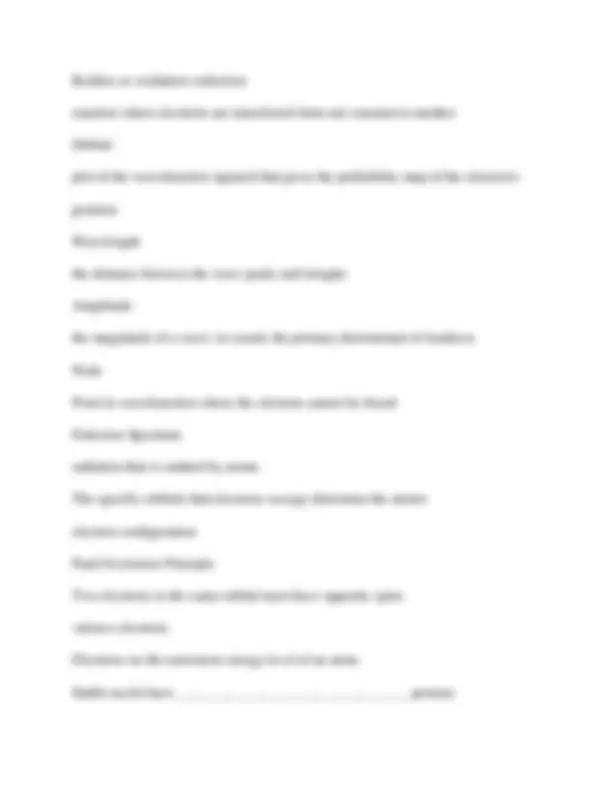
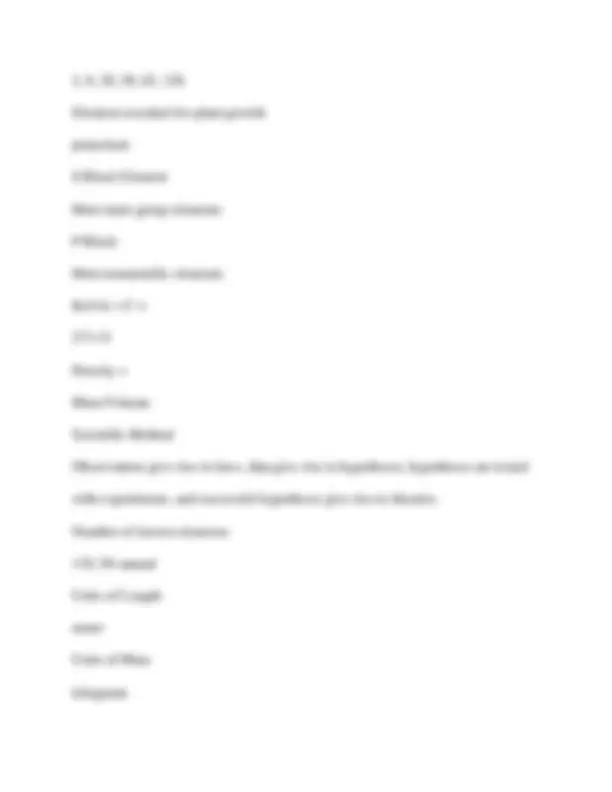
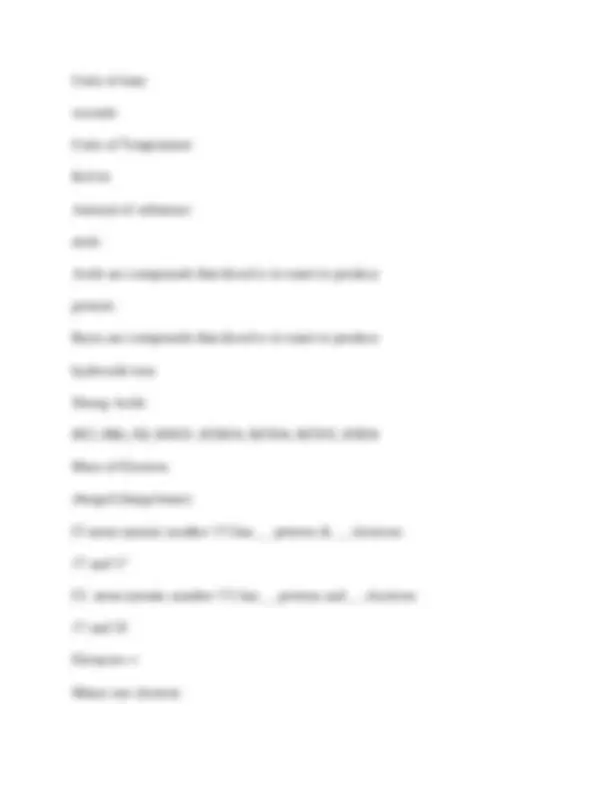
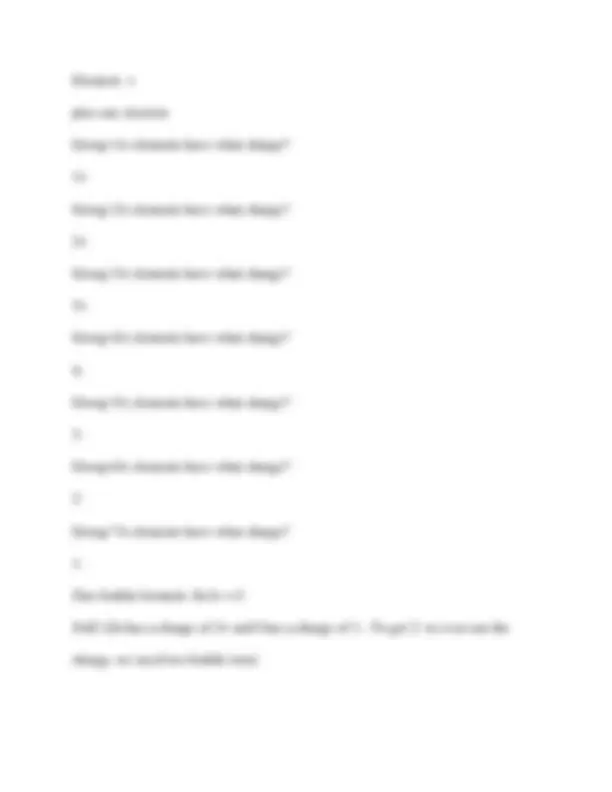
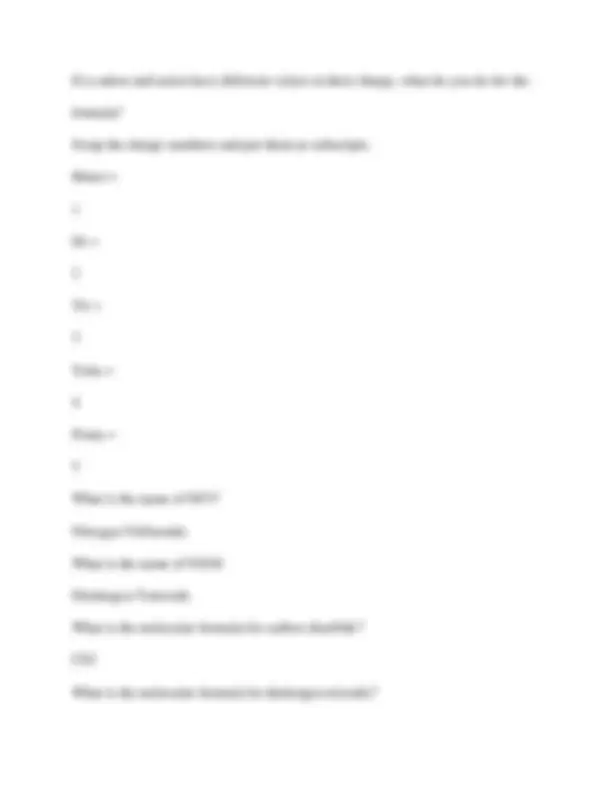
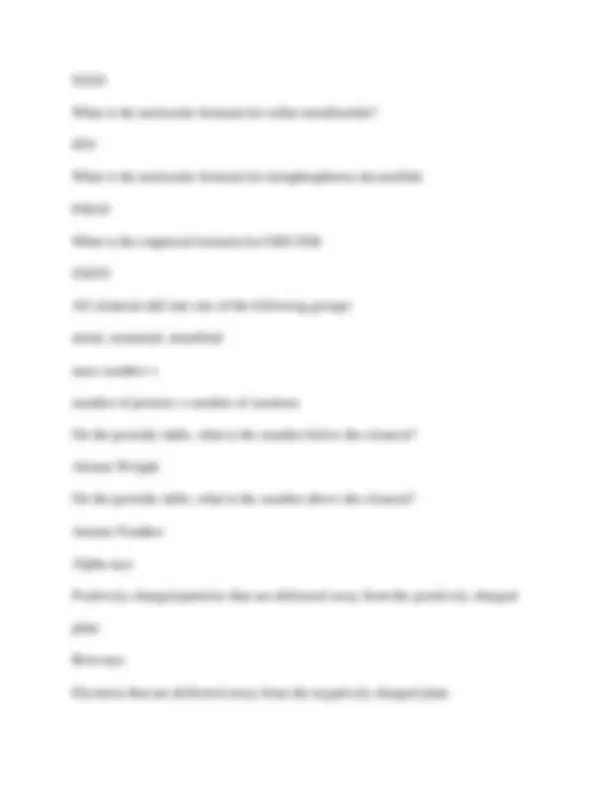



Study with the several resources on Docsity

Earn points by helping other students or get them with a premium plan


Prepare for your exams
Study with the several resources on Docsity

Earn points to download
Earn points by helping other students or get them with a premium plan
Community
Ask the community for help and clear up your study doubts
Discover the best universities in your country according to Docsity users
Free resources
Download our free guides on studying techniques, anxiety management strategies, and thesis advice from Docsity tutors
A comprehensive collection of multiple-choice questions and answers covering fundamental concepts in chemistry. topics include atomic structure, chemical bonding, molecular geometry, and basic stoichiometry. The questions are designed to test understanding of key principles and problem-solving skills, making it a valuable resource for students preparing for exams. The questions range in difficulty, providing a thorough review of essential chemistry concepts. This resource is particularly useful for self-assessment and exam preparation.
Typology: Exams
1 / 99

This page cannot be seen from the preview
Don't miss anything!




























































































What is the term used for findings that are summarized based on a pattern or trend? a. Law b. Hypothesis c. Theory d. Phenomena e. Prediction a. Law Which of the following is a tentative explanation for a set of observations? Select one: a. Law b. Hypothesis c. Theory d. Phenomena e. Prediction b. Hypothesis
If a liquid contains 60% sugar and 40% water throughout its composition then what is it called? Select one: a. Solute b. Compound c. Homogeneous mixture d. Heterogeneous mixture e. Solvent c. Homogeneous mixture Which of the following does not have a uniform composition throughout? Select one: a. Element b. Compound c. Homogeneous mixture d. Heterogeneous mixture e. Solvent d. Heterogeneous mixture Which one of these represents a physical change? Select one: a. Water, when heated, forms steam.
d. 3.4 cm e. 34 cm a. 58 cm Given that 1 inch = 2.54 cm, 1.00 cm3 is equal to Select one: a. 16.4 in b. 6.45 in c. 0.394 in d. 0.155 in e. 0.0610 in e. 0.0610 in What terms defines a mass which is exactly equal to 1/12 the mass of one carbon- 12 atom? Select one: a. Isotope number b. Mass number c. Mass-to-charge ratio d. Atomic number e. Atomic mass unit
e. Atomic mass unit How many neutrons are there in an atom of lead whose mass number is 208? Select one: a. 82 b. 126 c. 208 d. 290 e. none of them b. 126 Which of these elements is chemically similar to magnesium? Select one: a. Sulfur b. Calcium c. Iron d. Nickel e. Potassium b. Calcium
b. K2S c. NaS d. Na2S e. SeS d. Na2S Which one of the following formulas of ionic compounds is the least likely to be correct? Select one: a. NH4Cl b. Ba(OH) c. Na2SO d. Ca2NO e. Cu(CN) d. Ca2NO What is the name of ClO - ion? Select one: a. hypochlorite b. chlorate c. chlorite
d. perchlorate e. perchlorite a. hypochlorite Which of the following is a molecular formula for a compound with an empirical formula of CH? Select one: a. C2H b. C3H c. C4H d. C6H e. None of the answers is correct. d. C6H Which is the correct electron configuration for gold? Select one: a. [Xe]4f145d96s b. [Xe]4f145d106s c. [Xe]4f135d106s d. [Xe]4f145d106s e. None of the electron configurations is correct.
Select one: a. cannot be used to identify an unknown atom. b. can be used to identify unknown atoms. c. can be explained by the movement of protons colliding with electrons. d. none of the. b. can be used to identify unknown atoms. Which one of the following equations correctly represents the process relating to the ionization energy of X? Select one: a. X(s) → X+(g) + e- b. X2(g) → X+(g) + X-(g) c. X(g) + e- → X-(g) d. X-(g) → X(g) + e- e. X(g) → X+(g) + e- e. X(g) → X+(g) + e- Consider the element with the electron configuration [Kr]5s24d105p5. This element is Select one: a. a halogen. b. a transition metal.
c. an alkali metal. d. an actinide element. e. a noble gas. a. a halogen. Consider the element with the electron configuration [Kr]5s24d7. This element is Select one: a. a halogen. b. a transition metal. c. a nonmetal. d. an actinide element. e. a noble gas. b. a transition metal. How does atomic radius change as you move across the periodic table? Select one: a. Atomic radius decreases moving from left to right across a period and increases from top to bottom. b. Atomic radius increases moving left to right across a period and decreases from top to bottom. c. Smaller nuclear charge lowers energy; more electrons in an orbital lowers energy.
b. 3A The effective nuclear charge for an atom is less than the actual nuclear charge due to Select one: a. shielding. b. penetration. c. paramagnetism. d. electron-pair repulsion. e. relativity. a. shielding. Which pair of ions exhibits the greatest attractive force between them? Select one: a. Na+ and Cl- b. Ca2+ and Cl- c. Na+ and S2- d. Al3+ and Mg2+ e. Mg2+ and O2- e. Mg2+ and O2- Which of the following is a basic oxide?
Select one: a. P4O b. MgO c. Al2O d. SO e. Cl2O b. MgO Which of these compounds is most likely to be covalent? Select one: a. Rb2S b. SrCl c. CS d. CaO e. MgI c. CS In the Lewis structure of the iodate ion, IO3-, that satisfies the octet rule, the formal charge on the central iodine atom is Select one: a. 2.
d. CCl3+ e. NH b. SF Which of these ionic solids would have the largest lattice energy? Select one: a. NaCl b. NaF c. CaBr d. CsI e. CaCl e. CaCl The total number of bonding electrons in a molecule of formaldehyde (H2CO) is Select one: a. 3. b. 4. c. 6. d. 8. e. 18. d. 8.
Which of the following molecules has a nonzero dipole moment? Select one: a. BeCl b. SF c. KrF d. CO e. CCl b. SF According to the VSEPR model, a molecule with the general formula AB5 with one lone pair on the central atom will have a ______ molecular geometry. Select one: a. tetrahedral b. trigonalbipyramidal c. square pyramidal d. octahedral e. seesaw c. square pyramidal Which is the most reasonable prediction for the three F-Br-F bond angles in BrF3? Select one: a. 90°, 90°, and 180°
c. 3 d. 0 e. 4 a. 1 For which one of the following molecules is the indicated type of hybridization not appropriate for the central atom? Select one: a. BeCl2; sp b. SiH4; sp c. BF3; sp d. C2H2; sp e. H2O; sp a. BeCl2; sp According to the VSEPR model, the predicted molecular geometry of ammonia, NH3, is Select one: a. linear. b. trigonal planar. c. bent.
d. tetrahedral. e. trigonal pyramidal. e. trigonal pyramidal. What is the mass of one copper atom? (NA = 6.022 × 1023 mol-1) Select one: a. 1.055 × 10-22 g b. 63.55 g c. 1 amu d. 1.66 × 10-24 g e. 9.476 × 1021 g a. 1.055 × 10-22 g What is the percent sulfur in iron(III) sulfate? Select one: a. 28% b. 32% c. 24% d. 48% e. 42% c. 24%